

Jennifer Drake, 1910 Nurse Ensemble
This is a project based on the 1911 Ellie Ensemble. Jennifer is a real nurse of 35 years, and was drawn to the history of the outfit, and has always wanted one of her own. Jennifer reports she keeps trying to create the historical caps of nurses using all sorts of materials like cardboard and fabric, but finally found a “home” with this one.
We will sell some parts of the Ellie project to Jennifer, and make others for her, based on her specific needs.
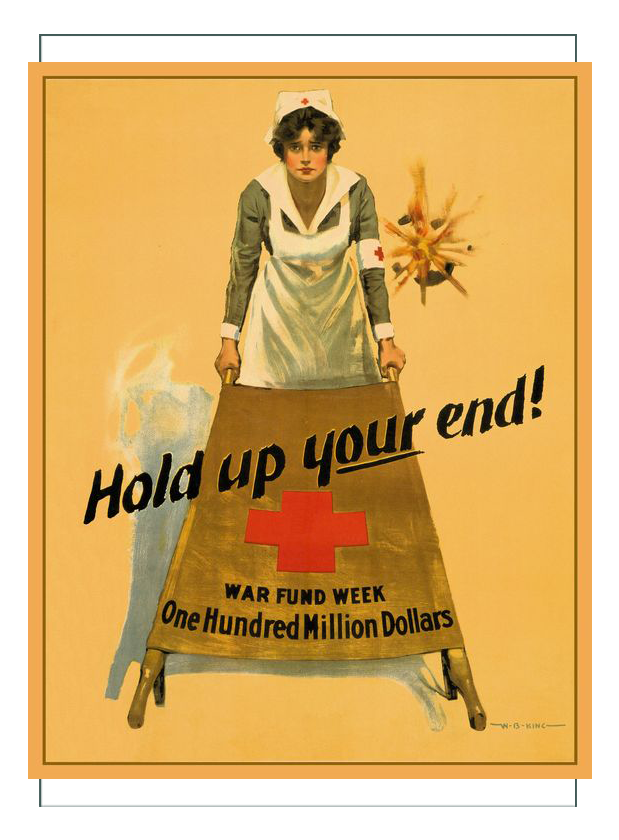

Based on the research already done for the Ellie project, and adding the preferences of Jennifer, we build the following to a custom fit:
- Dress
- Slip
- Apron
- Belt
It’s only a matter of fabric selection, and revising a few minor details to make it more wearable. Jennifer also needs to decide if she wants a corset. We recommended that if she will be wearing this ensemble to present programs or to TEACH others about nursing or nursing history, or to tell stories or attend events – that she needs the corset.
If she is wearing it for social events and for her own entertainment or that of her close family and friends, and just wants the “look” along with the antique collectibles, the corset may not be necessary.
As always, Silhouettes recommends wearing the complete ensemble so that you FEEL to TEACH. It enhances both the wearer’s and the viewer’s experience to be dressed fully and completely as historically correct as one can. We add to that list then:
- “S Monobosum Corset” with breast and rump pads
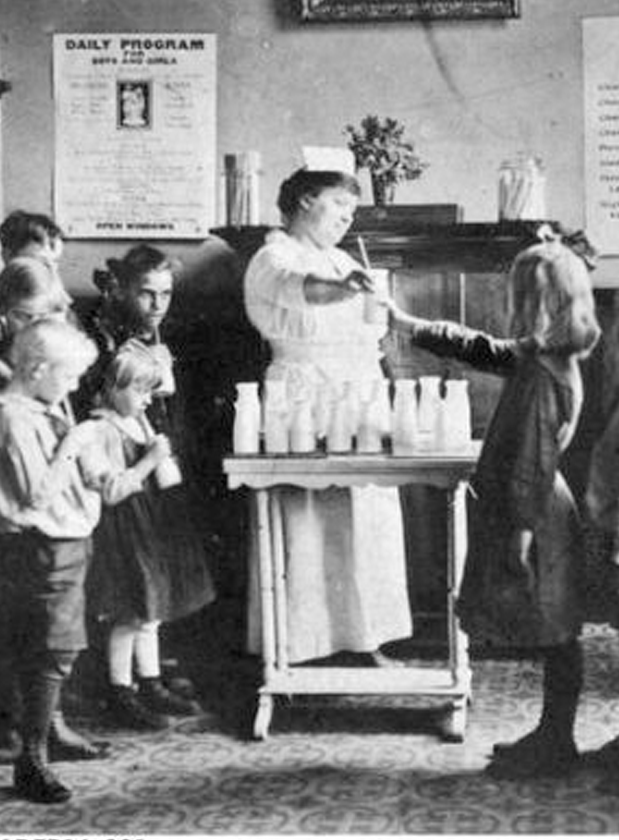
Click here to go to Jennifer’s Historical Context Page (next)
Click here to go to Jennifer’s History of Nursing Fashion Page
Click here to go to Jennifer’s Design Development Page
Continue below to see the Finished Project!

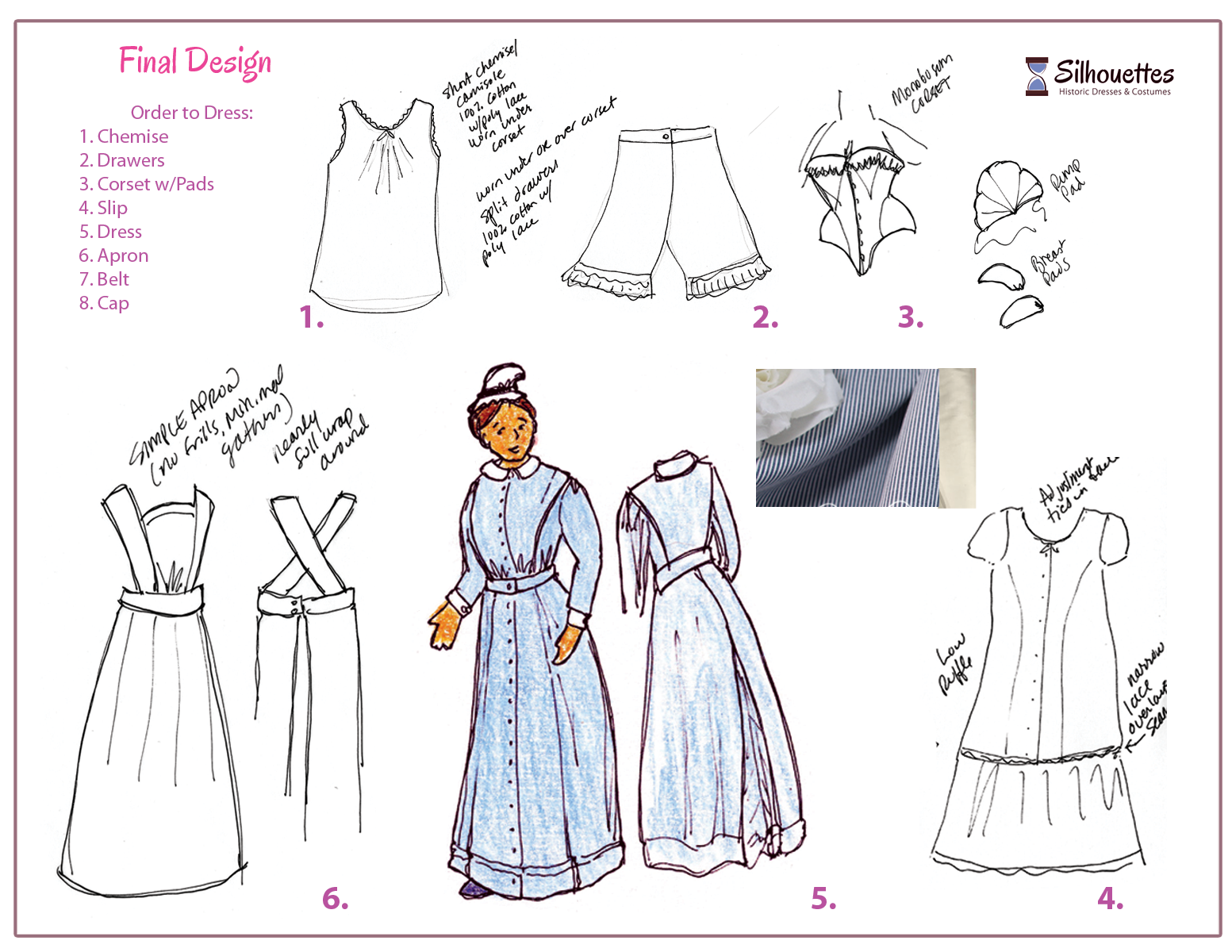
Final Fabric selections
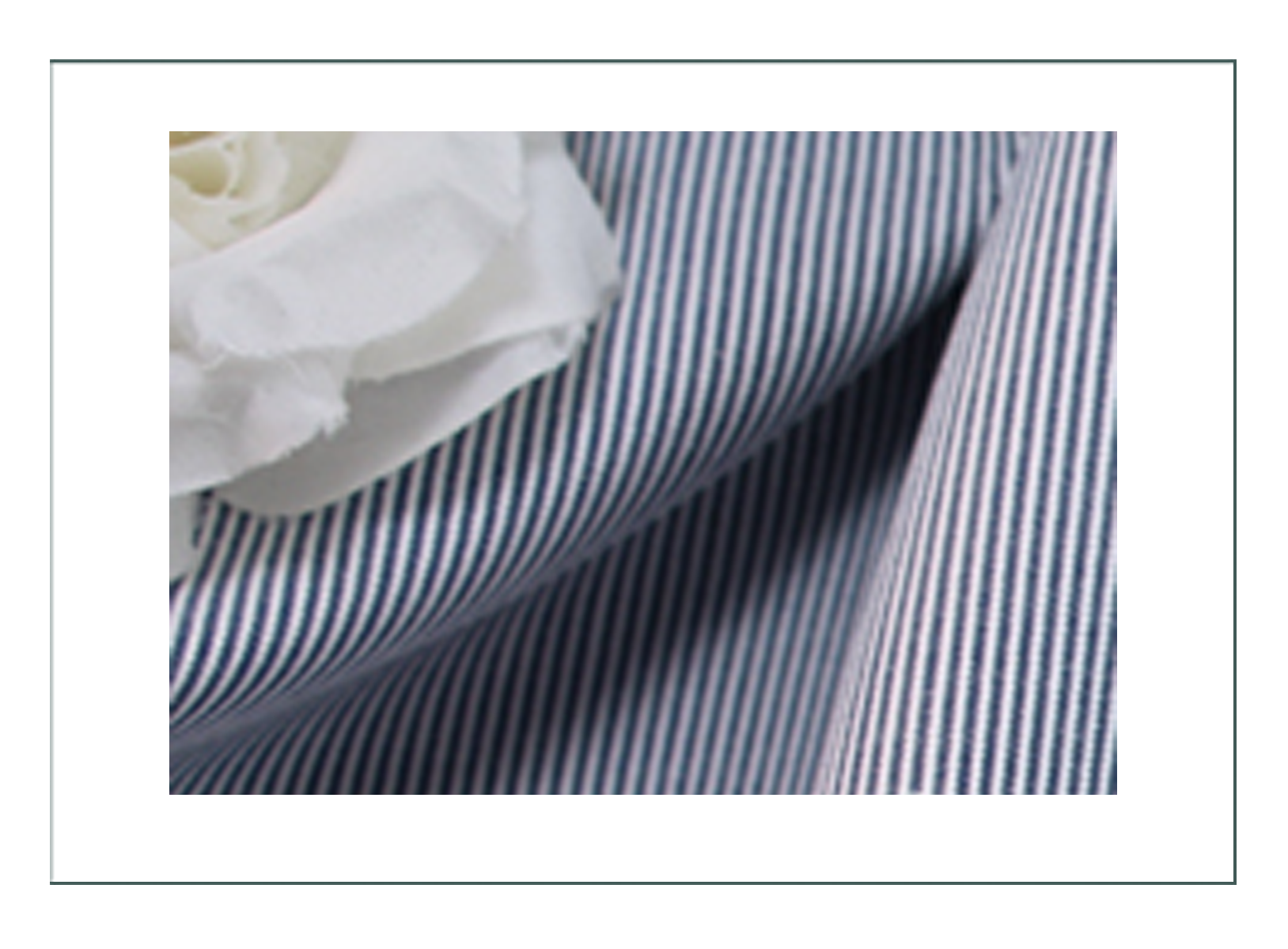
We switched around the fabrics for the undergarments due to quantities available, and lace to match. See each item below for final fabric selections for other than the dress.

Split French Drawers
After researching a bit what would REALLY have been worn, we decided to keep it simple and make undergarments that could be worn with or without modern panties. A combination of French Drawers and Corset cover would have been absolutely accurate, but difficult to dress and wear, so we opted to split the two: into a short chemise which preceded the camisole (which preceded the breast supporter, which preceded the brassiere) and French drawers.
The difference between these and earlier versions which we were proposing, is that these can be worn as a slip (formerly a petticoat), so the actual slip becomes optional.
These can be worn under the corset and over the chemise, over the corset, or not at all.
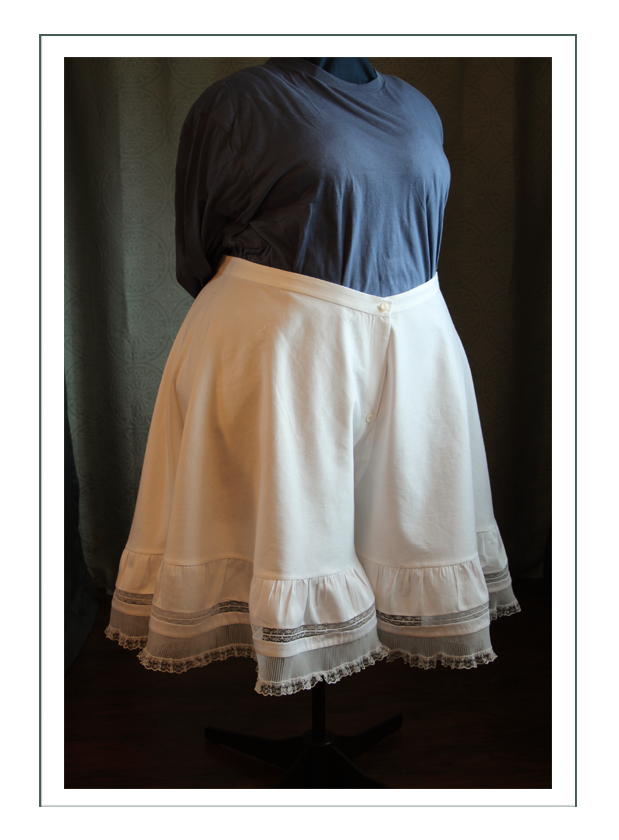
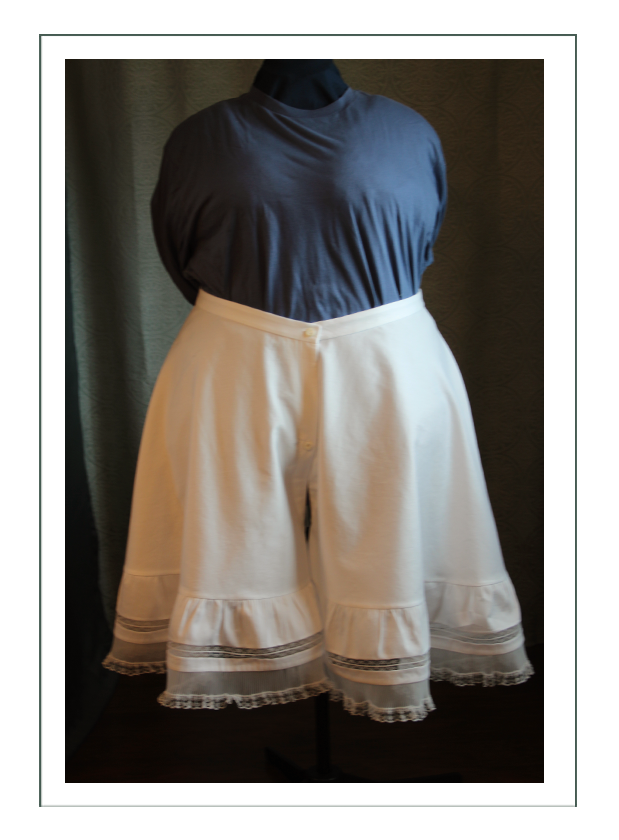
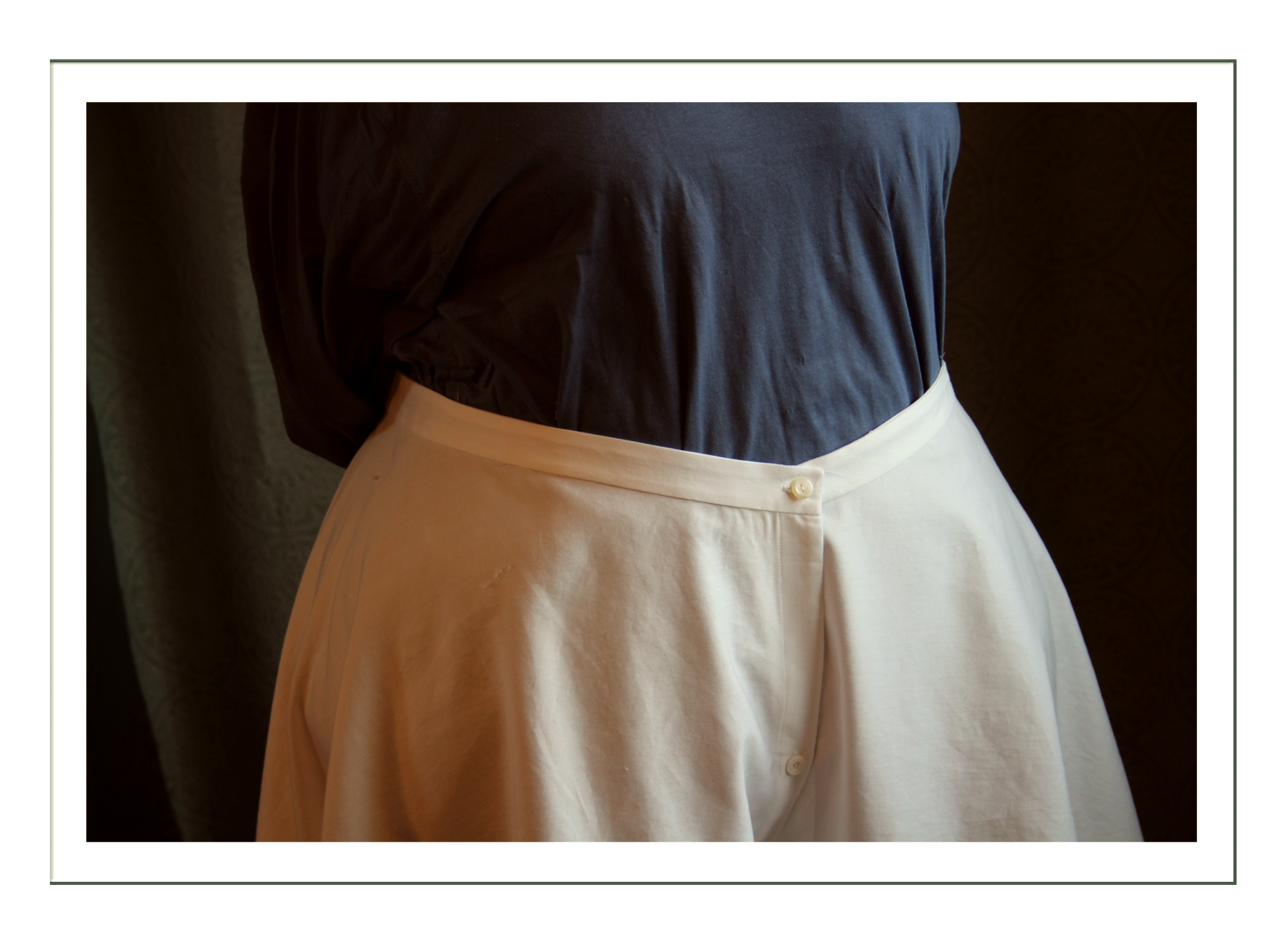
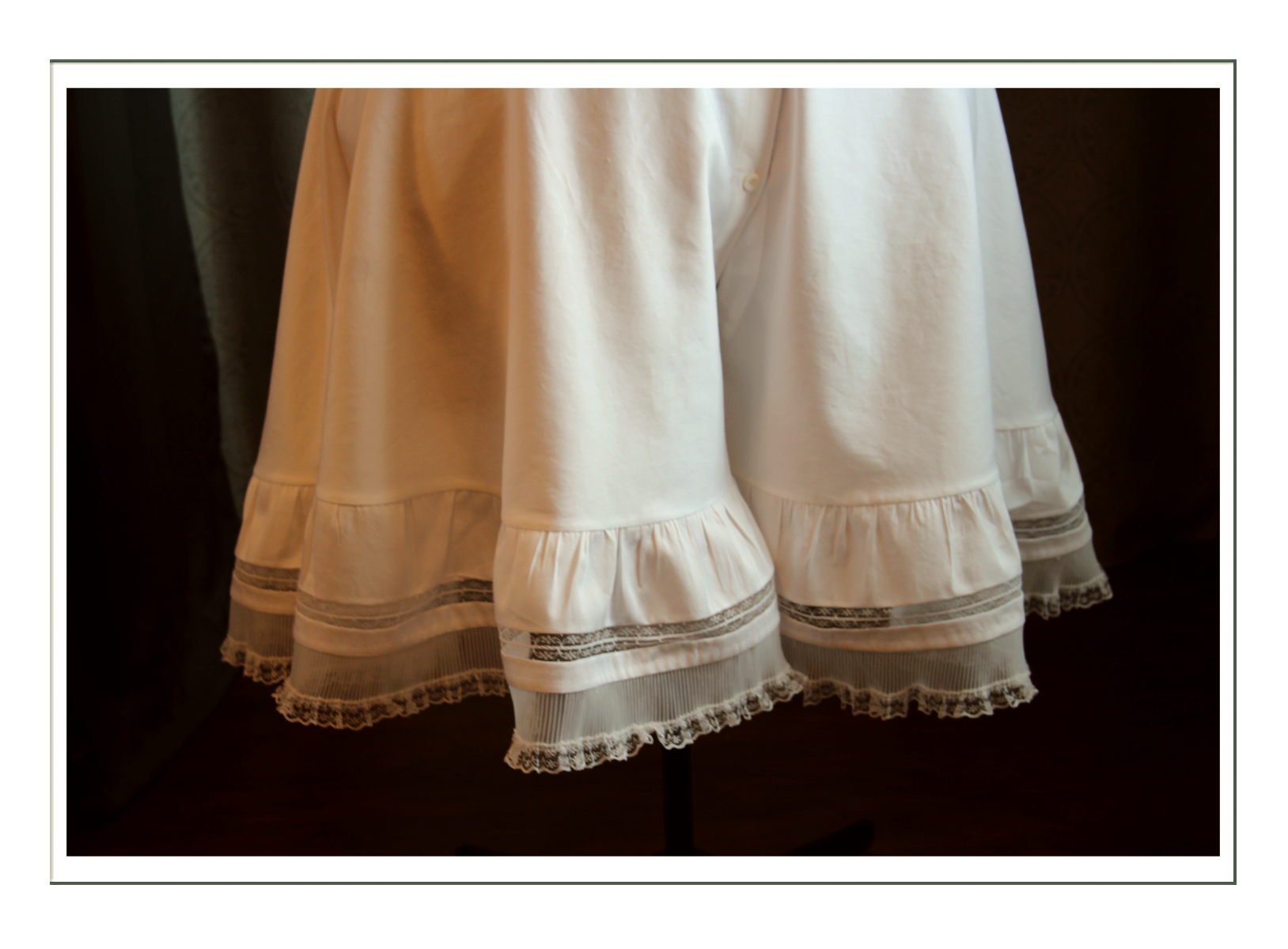
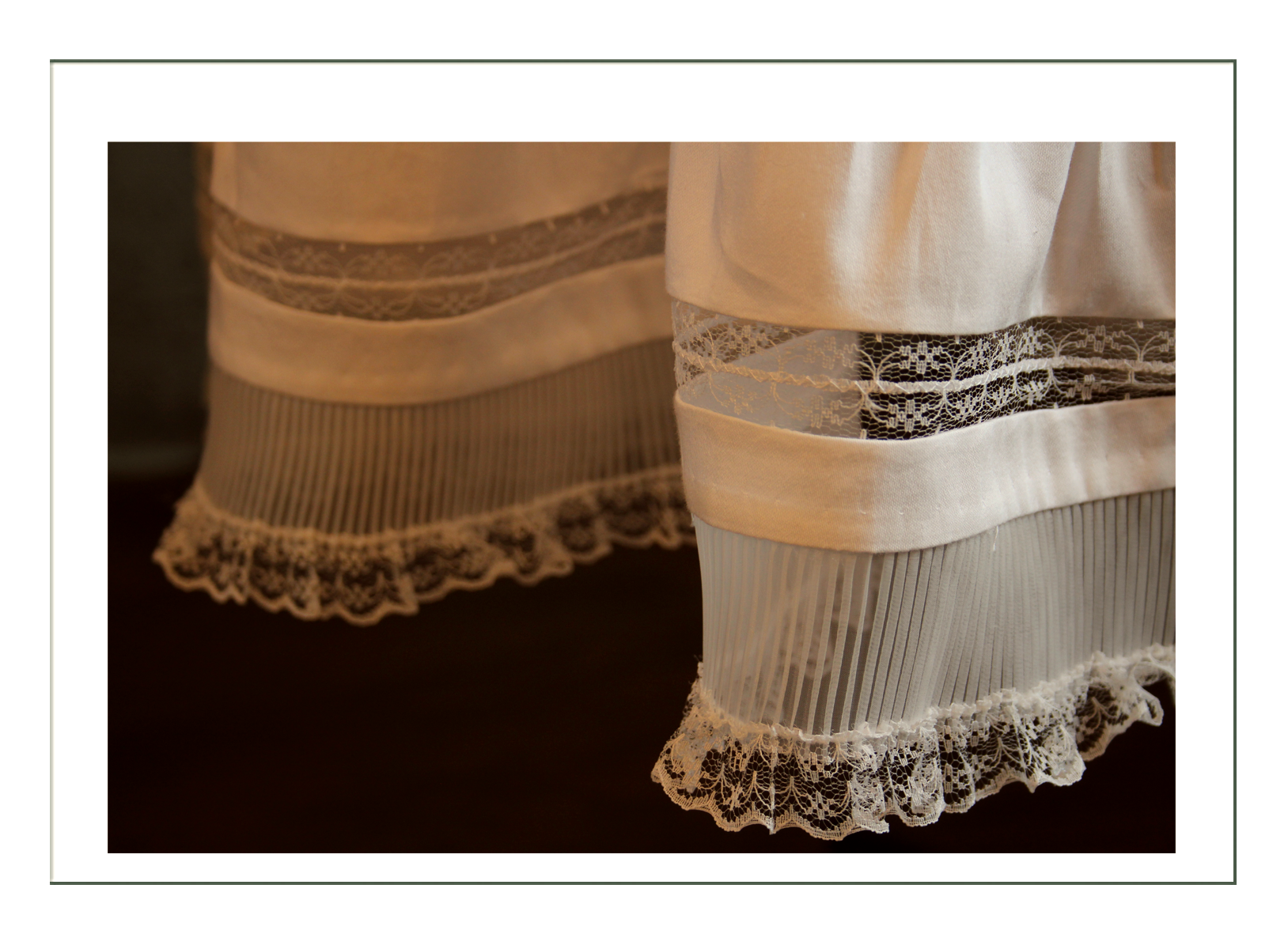
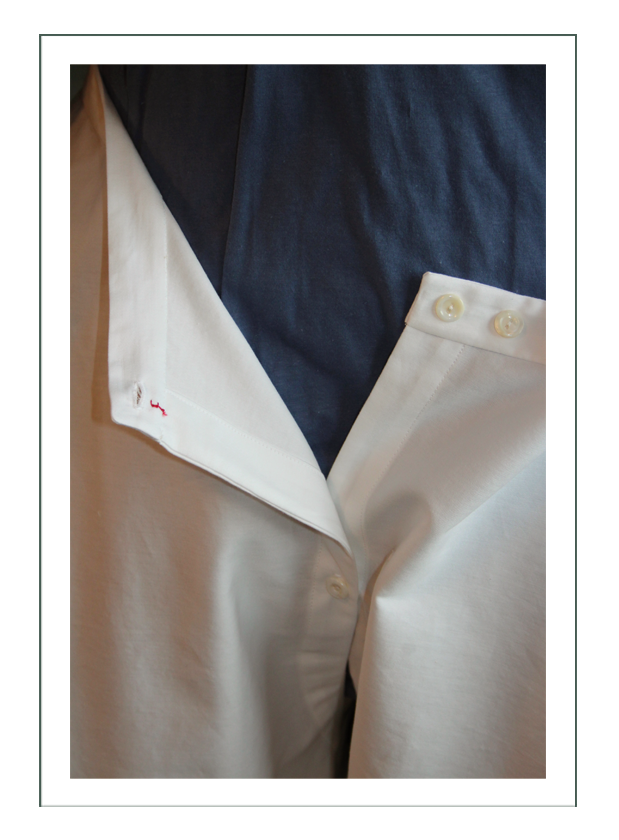
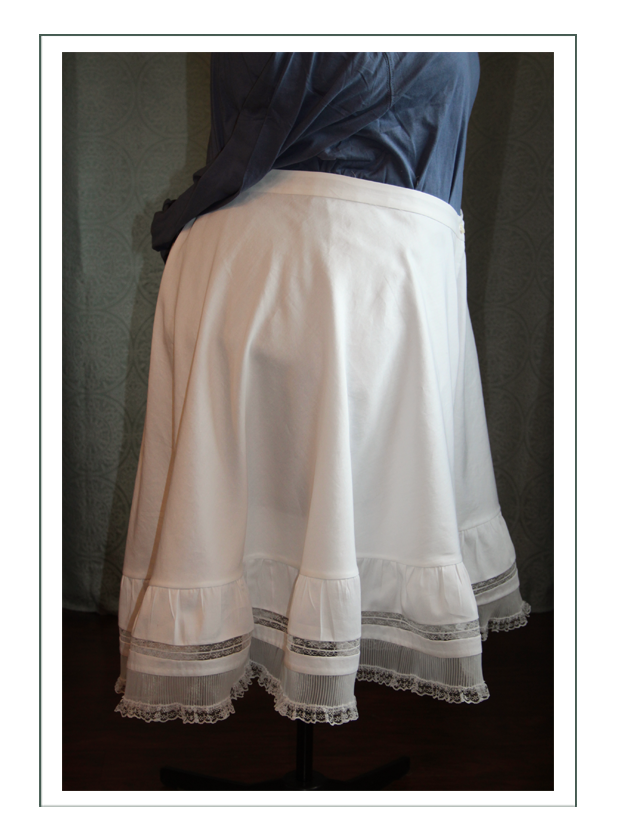
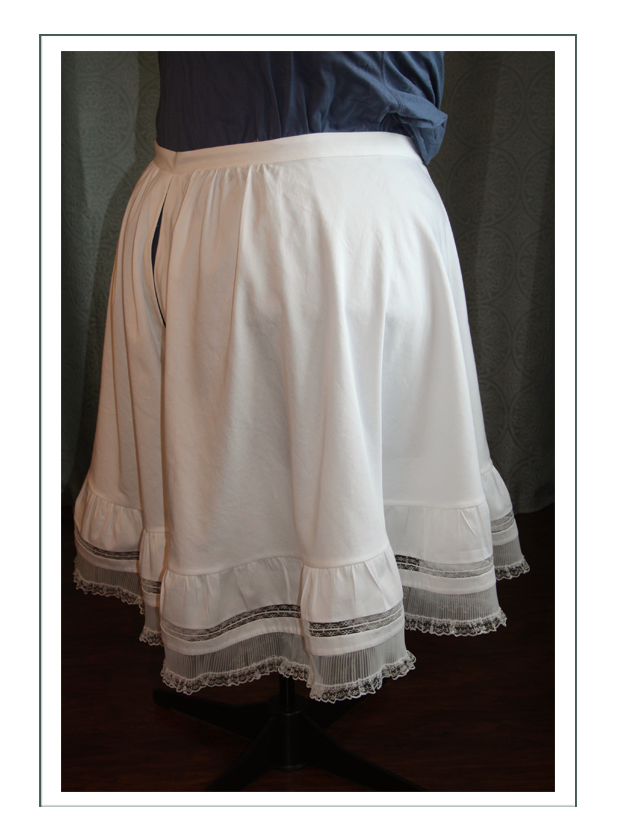
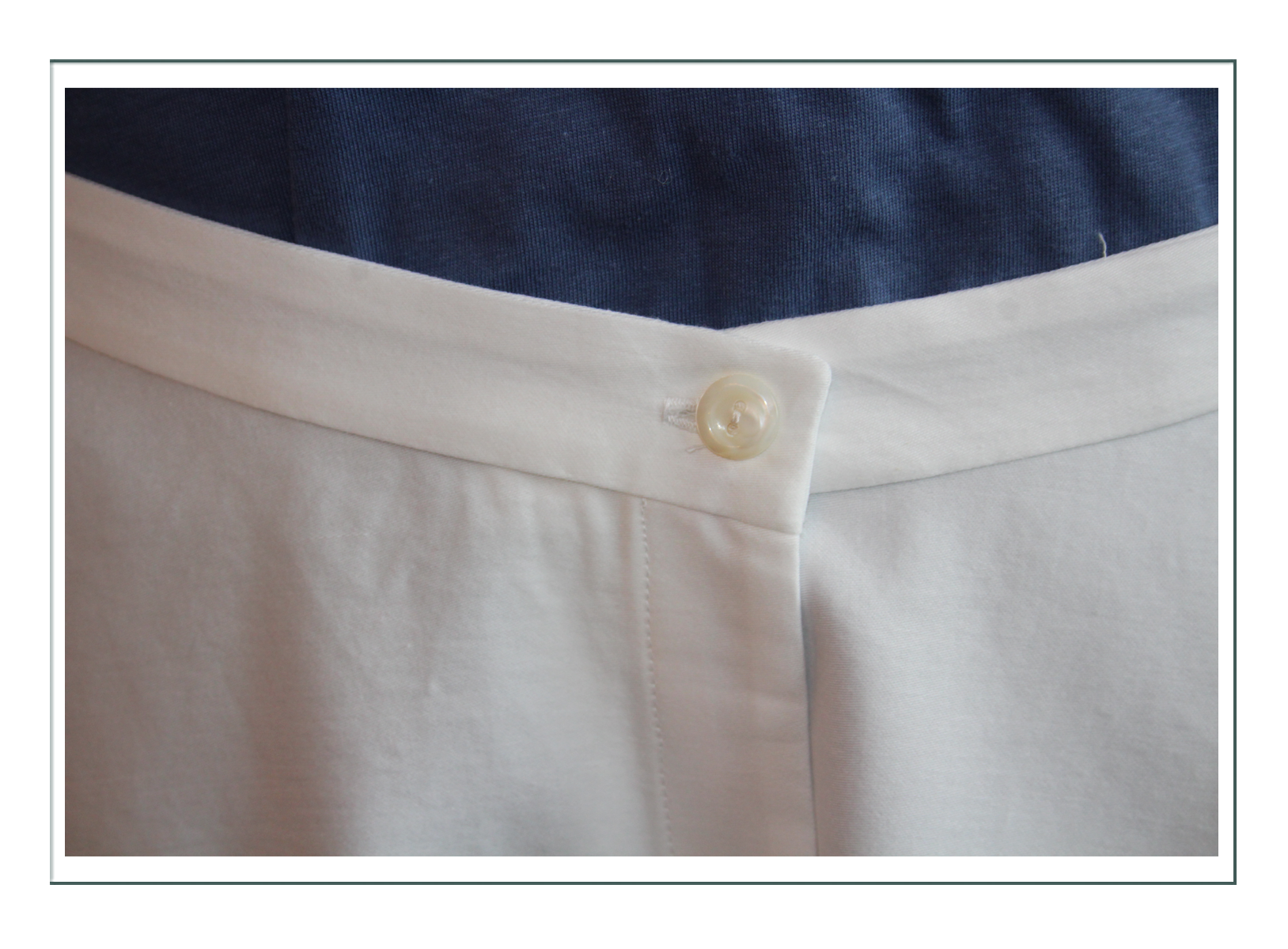
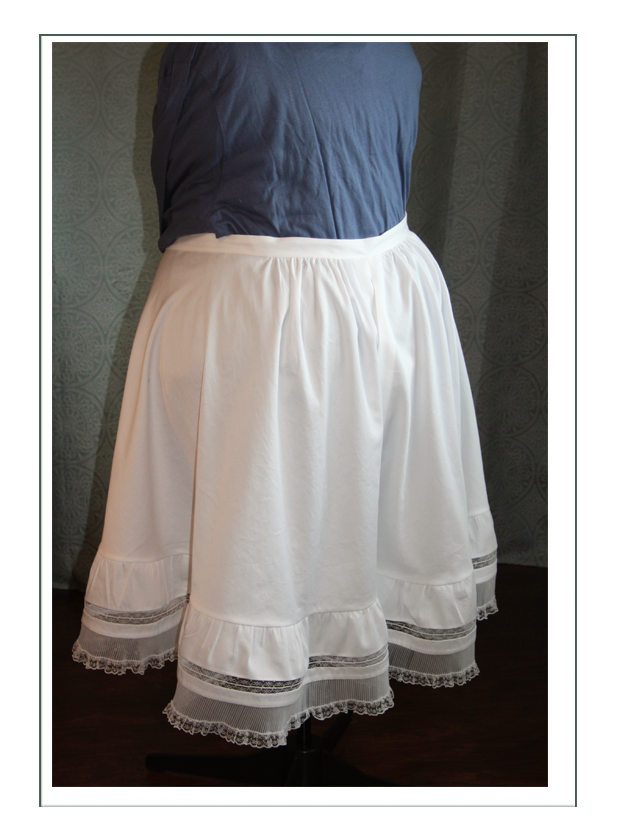
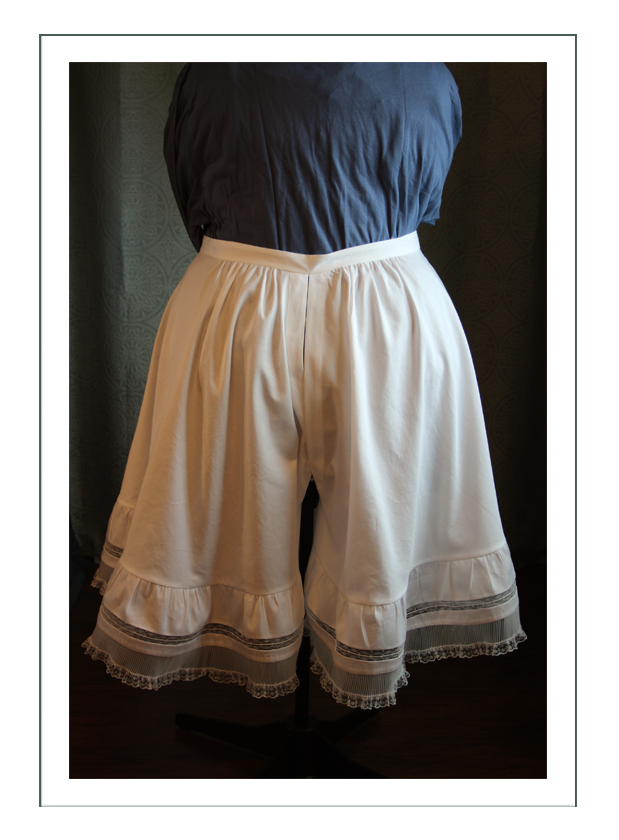
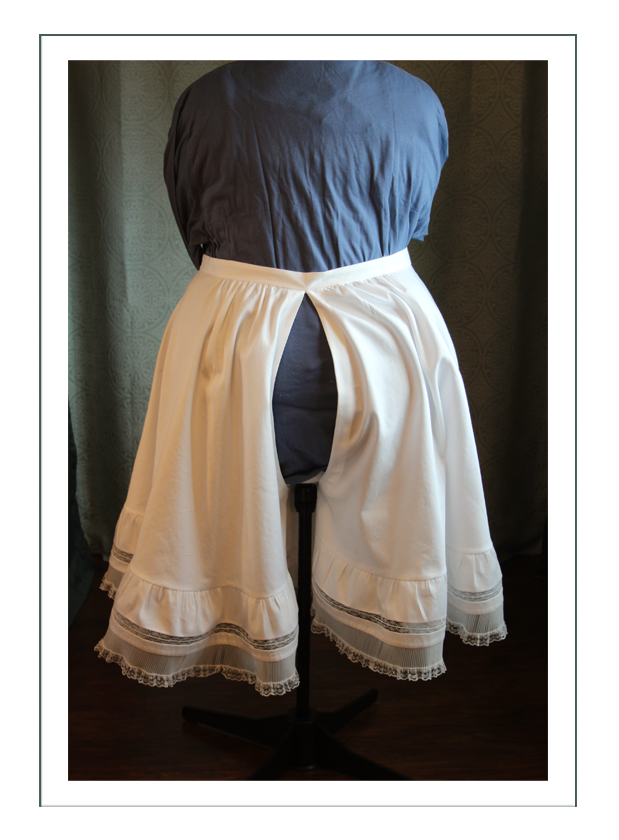
Chemise
Somewhat our “mix and match with modern unders”, we have built everything to be flexible in use. This chemise looks like Edwardian corset covers in detailing and that it is sleeveless with a lace insert, but it carries some of the Victorian advantages of being the layer the corset is worn over so it is the bottommost sweat layer and is durable and washable. It can be worn in or out (usually in). It has an adjustable armhole with a 100% silk ribbon at the shoulder.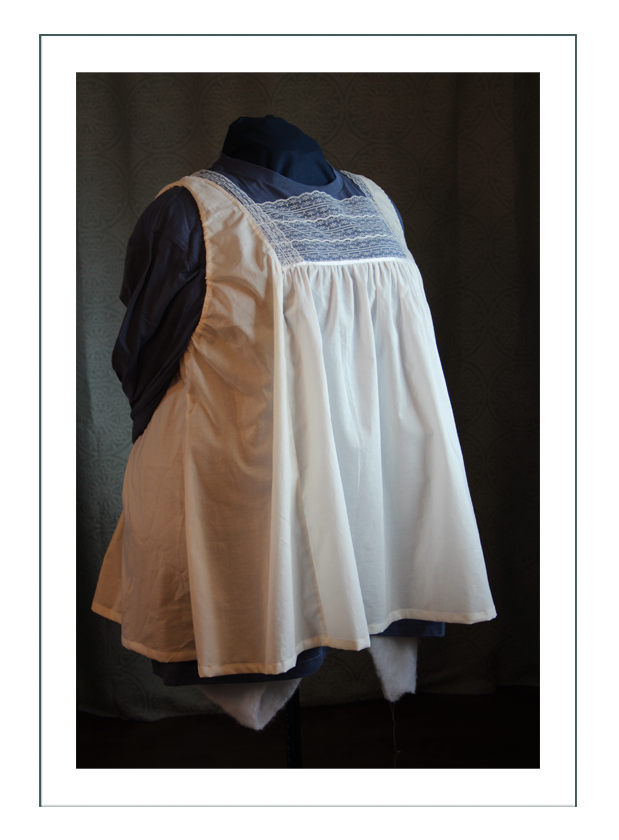
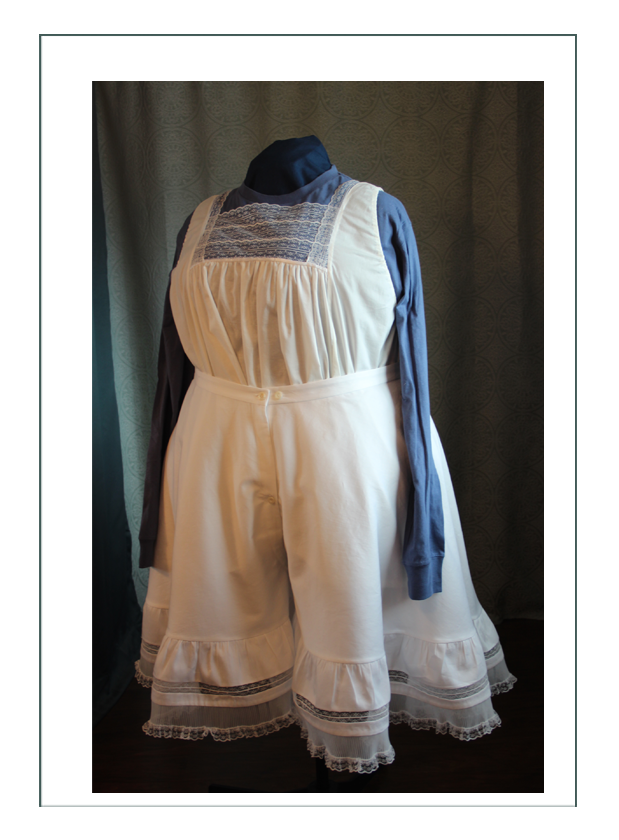
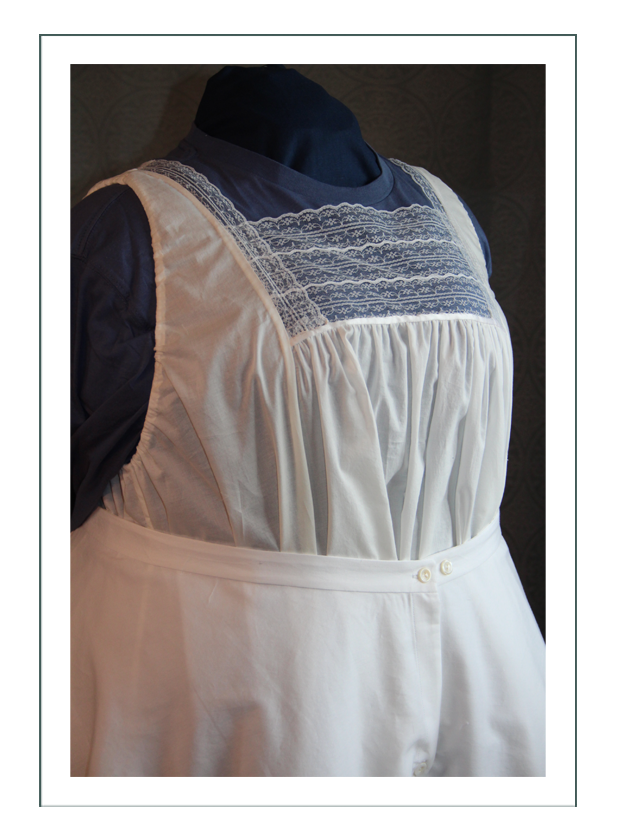
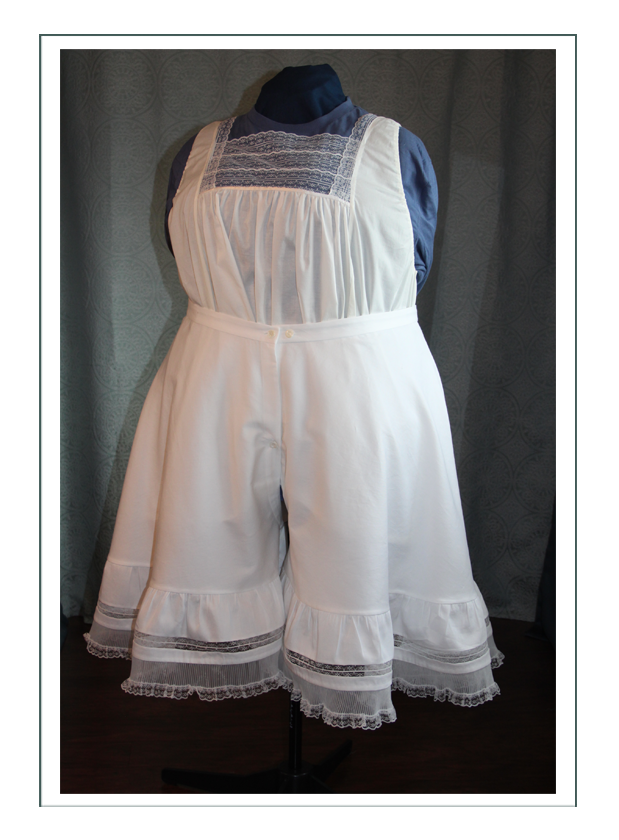
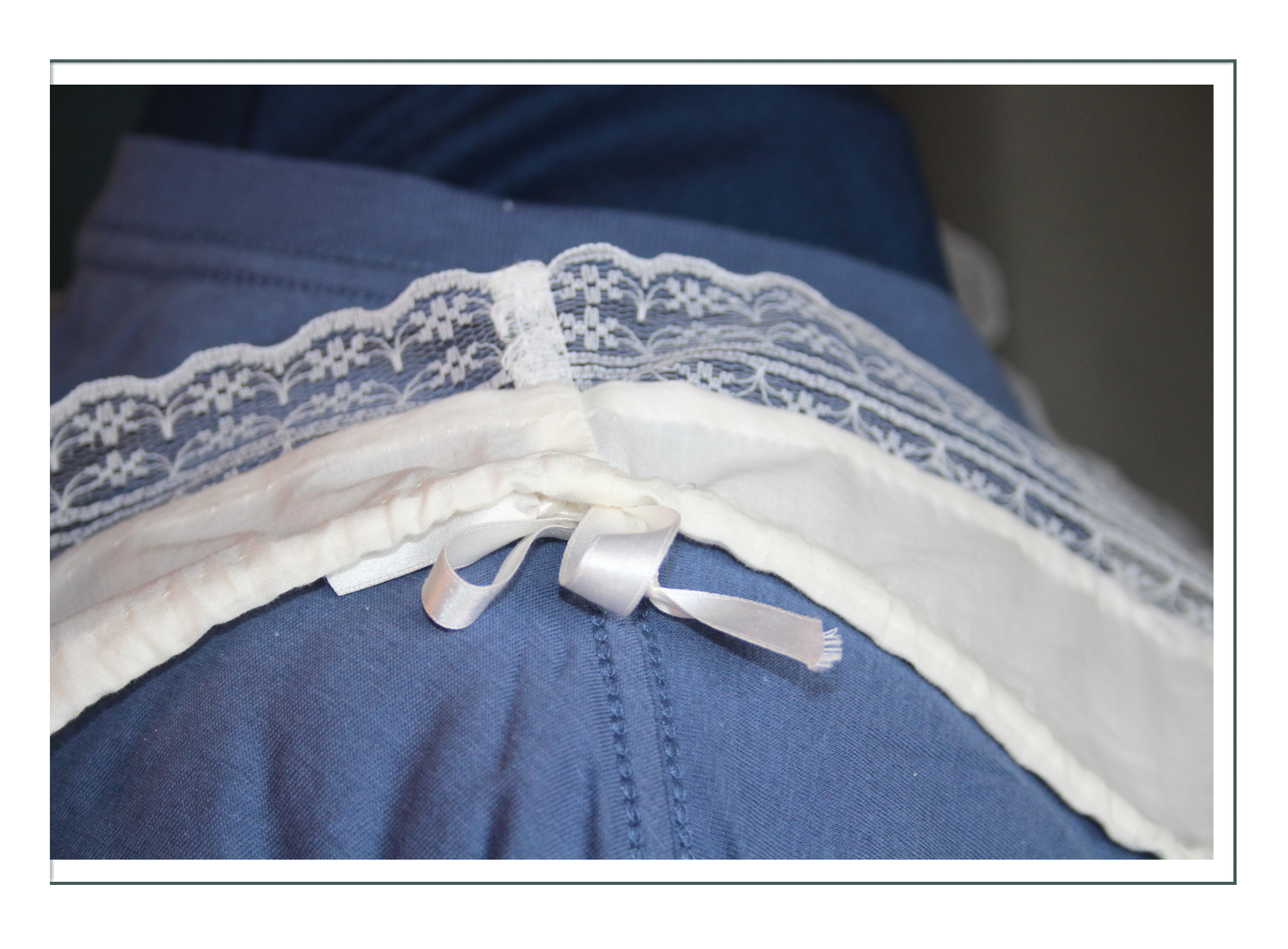
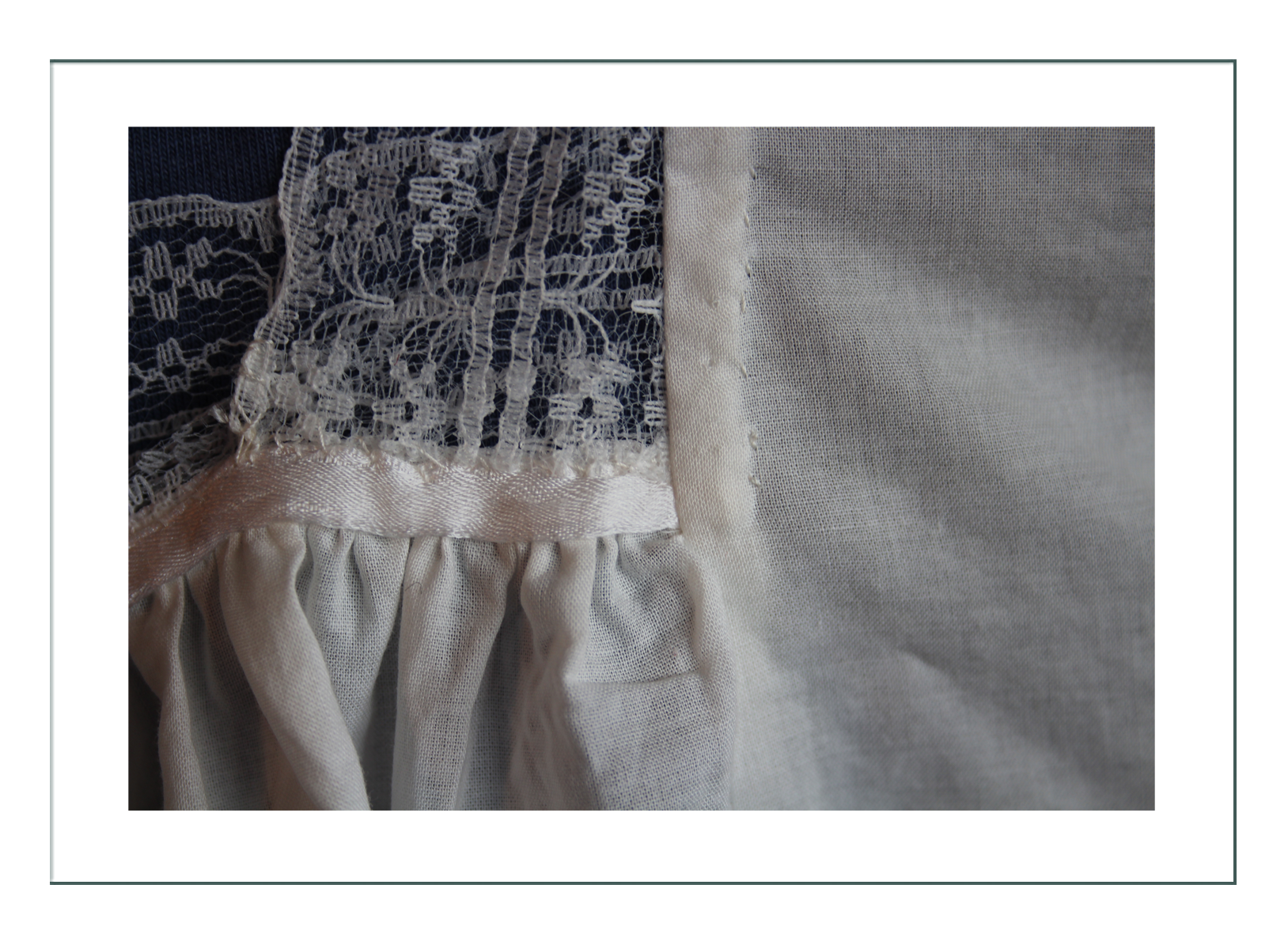
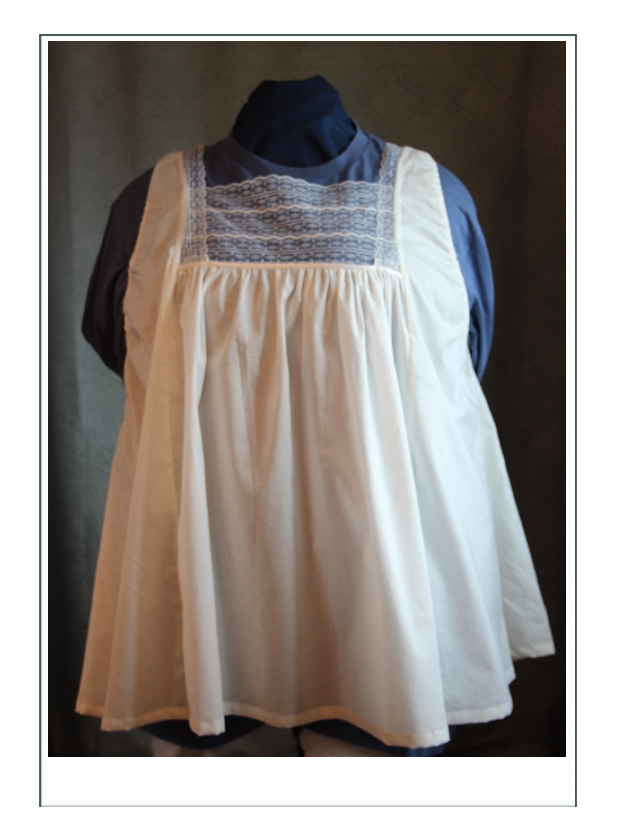
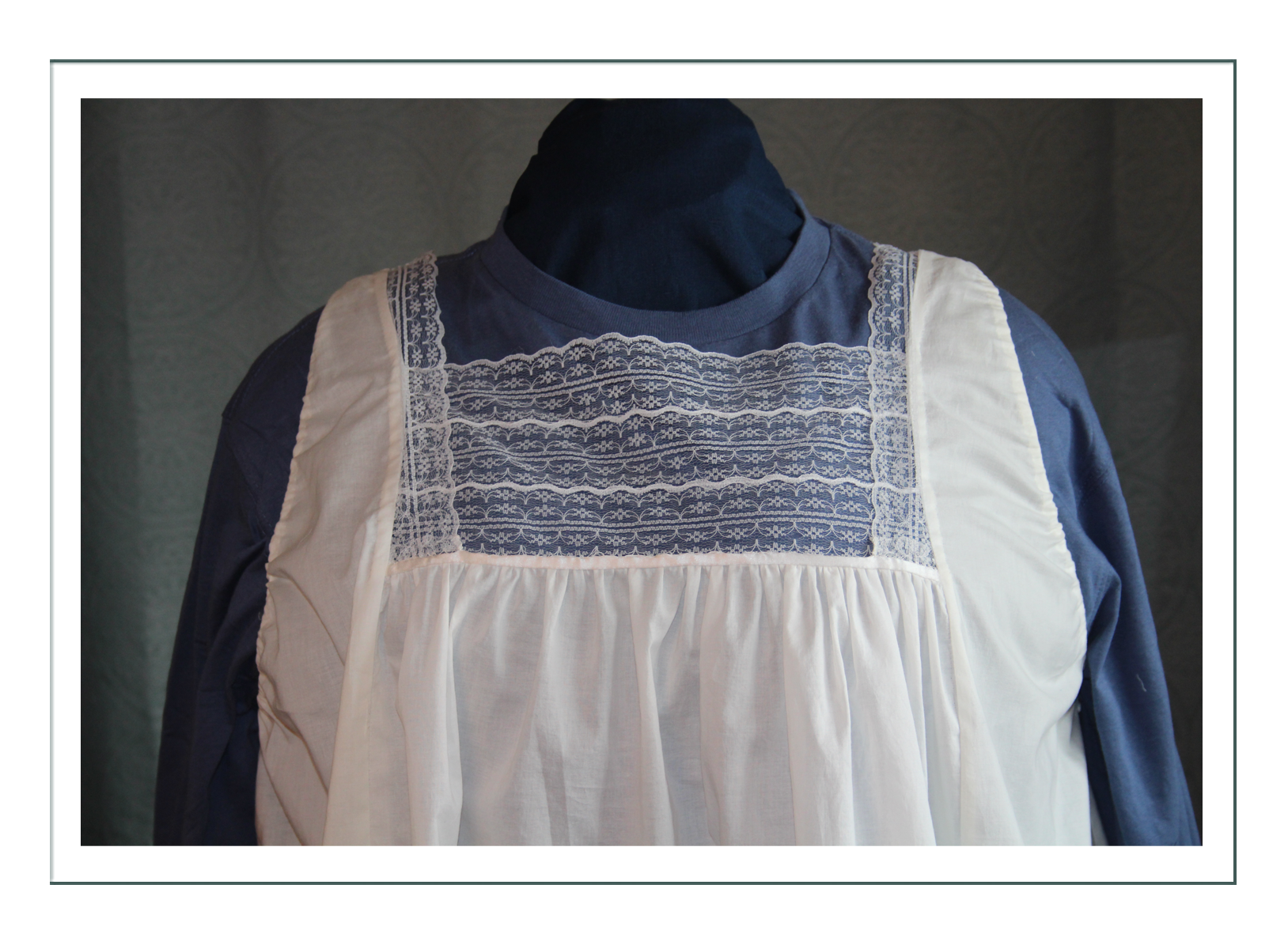
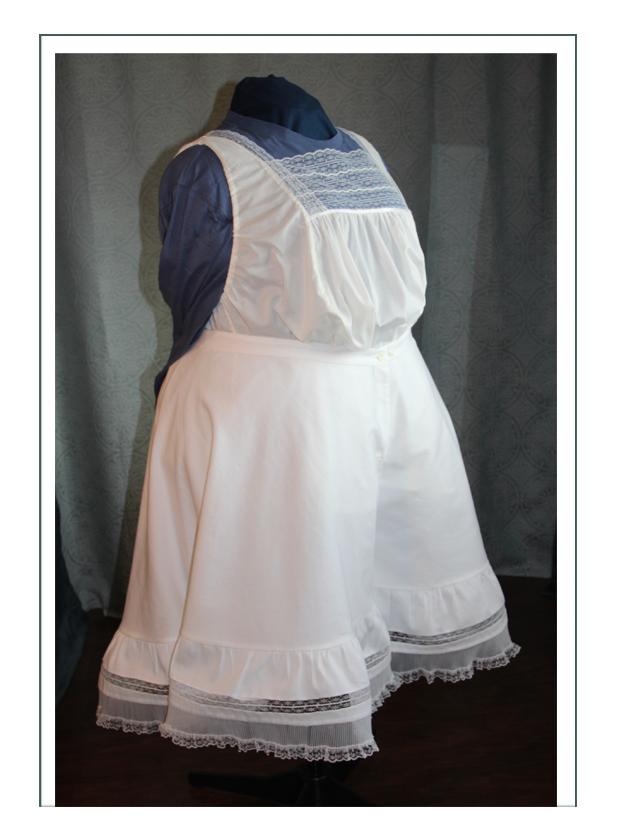
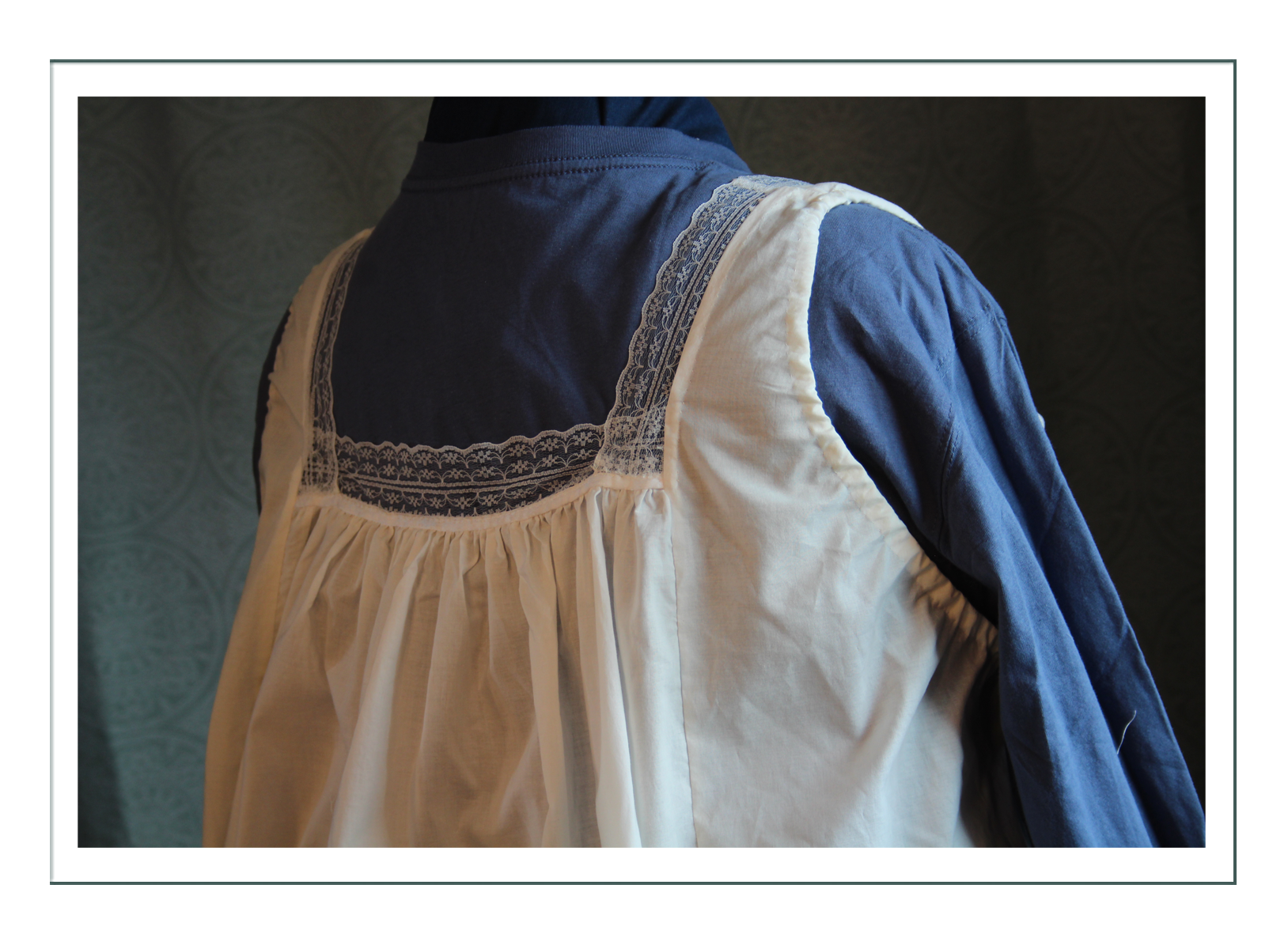
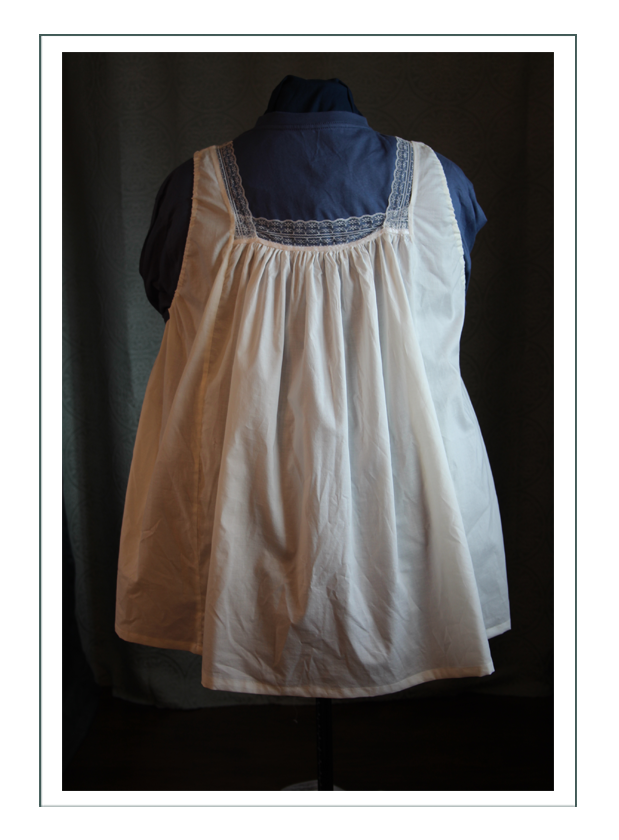
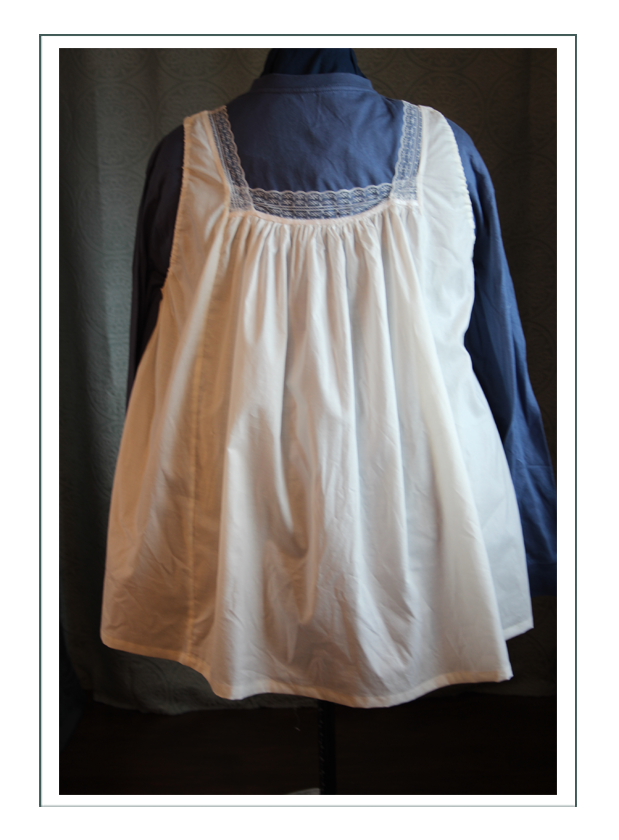
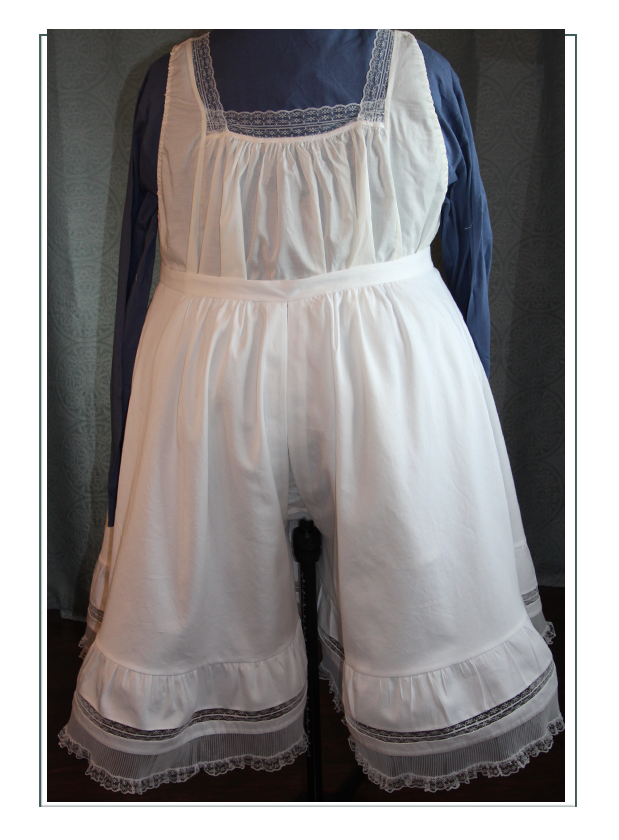
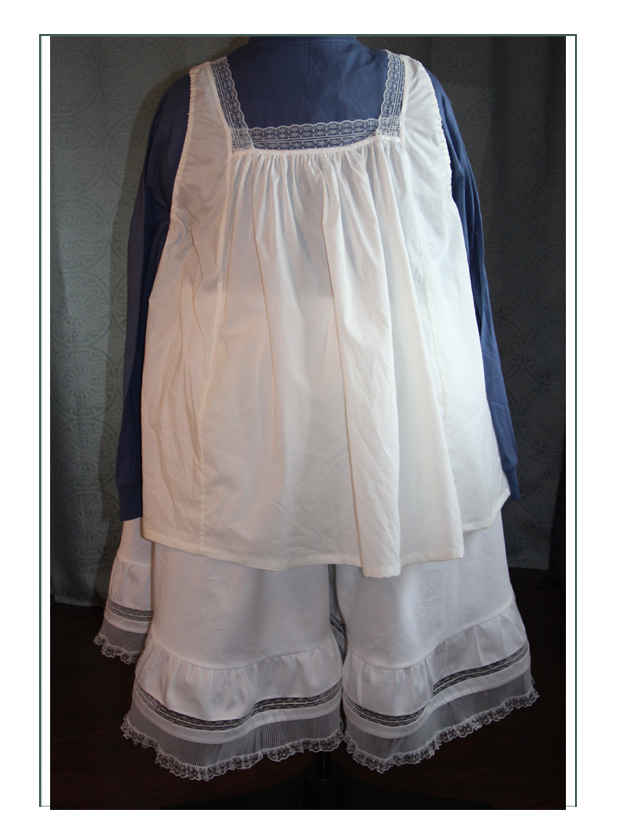
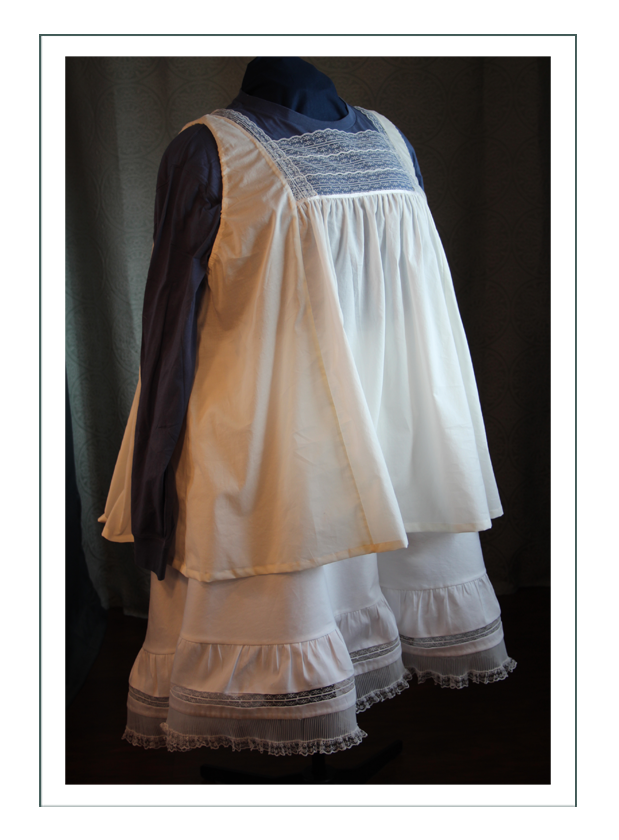
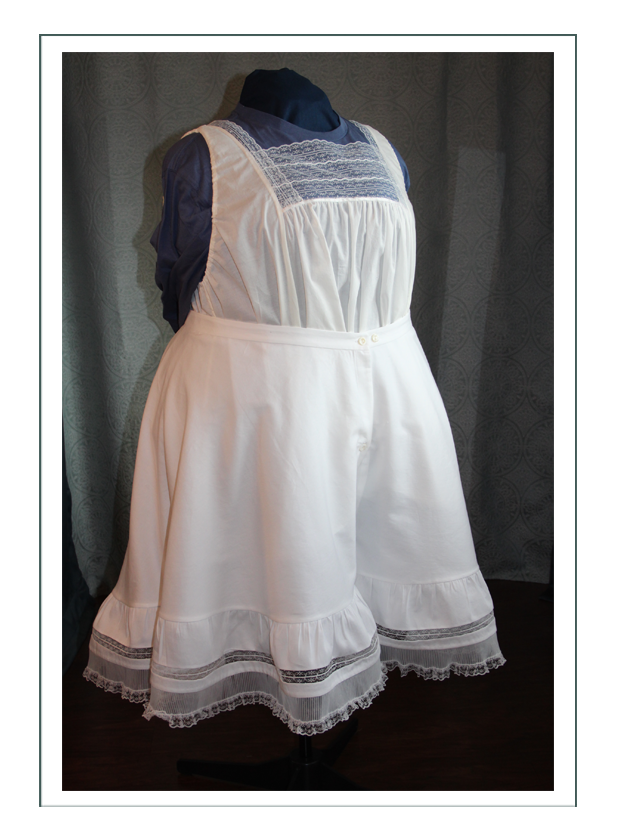
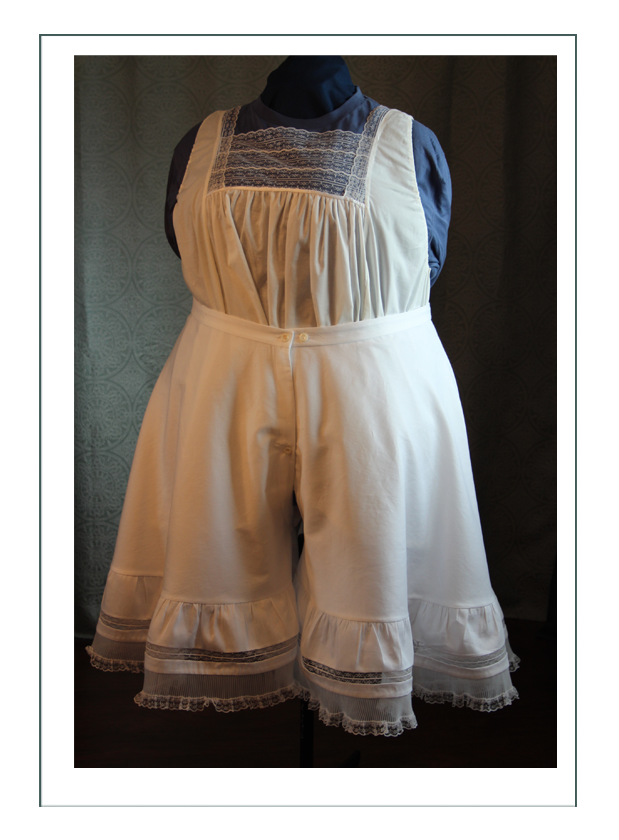
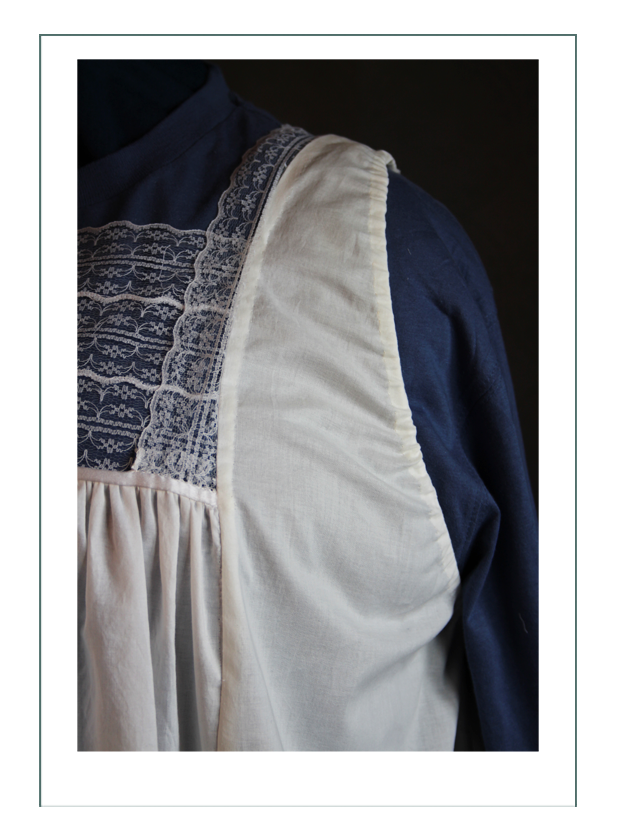
Slip
The slip is made of heritage batiste, a very tight historical cotton like lawn, but not sheer. With it, we have found a perfect match for a cotton broderie lace edging! That challenge was to get the fitted vertical line of the silhouette, while allowing for wearing under or over the corset; with or without a corset. This has mother of pearl buttons, a 100% silk satin adjustble neckline tie, cap sleeves, and a button up front for easy wear.
NOTE: We are starting to see the off balance desired silhouette – and remember – the fashion ideal of the era was a voluptuous, curvy, and large woman. Little thin women had one heck of a time looking fashionable, and they added pads and structures and all sorts of contrivances to achieve the look that Jennifer gets naturally!
Our goal is to enhance and smooth and direct those curves into the desired overall appearance. You’re seeing it here even though we’ve kept the slip loose enough to be comfortable to wear:
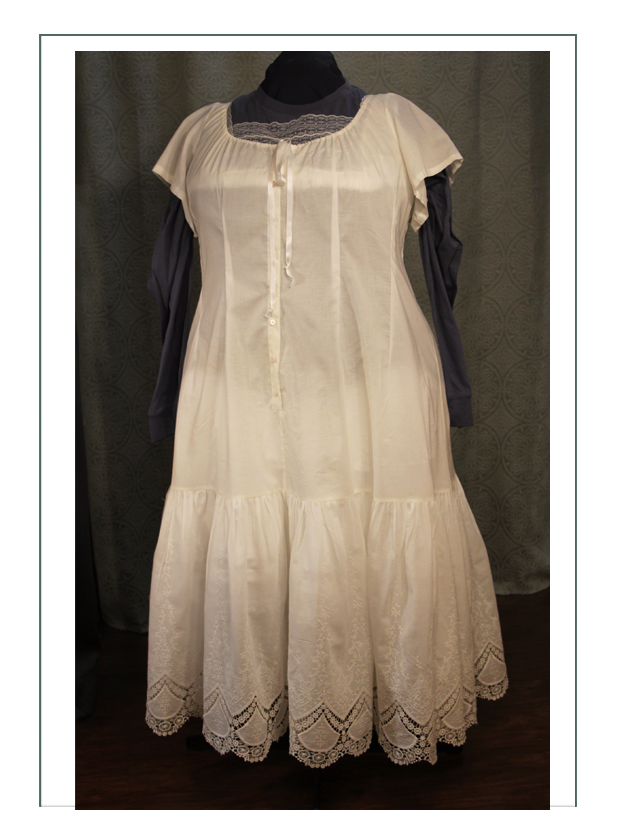
(While white or beige were more common for this type of ensemble in the era, the ability to see the corset through the fabric doesn’t matter. You won’t see it under the dress.) You can see the french seams, which are specific to lingerie and make a nice clean inside with not an edge showing, plus on these lighter fabrics allows for less weight while maintaining strength and durability for continued wear and repeated washings.
Jennifer will be able to wear this even if she chooses not to iron it. It is shown lightly starched and ironed here, but as it is worn, it will get softer and even more comfortable to wear next to her skin.
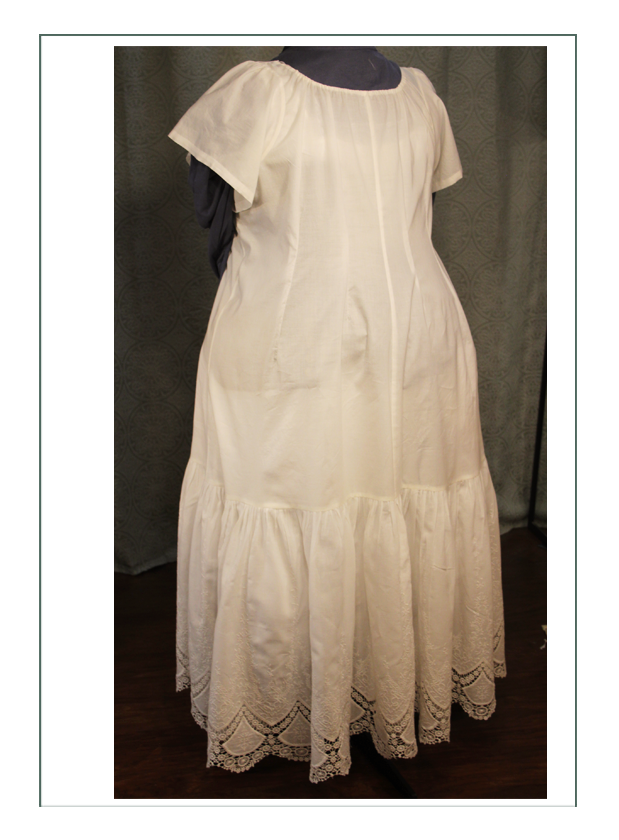
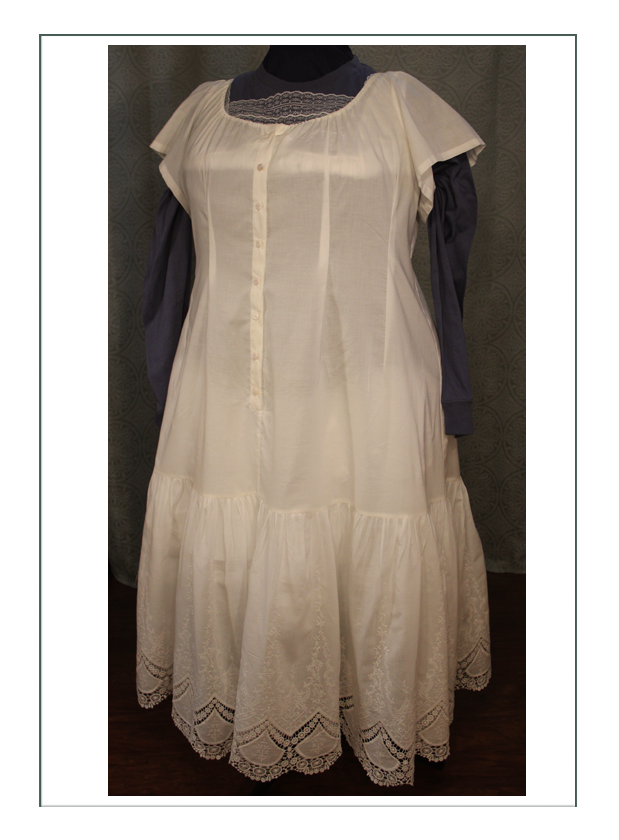
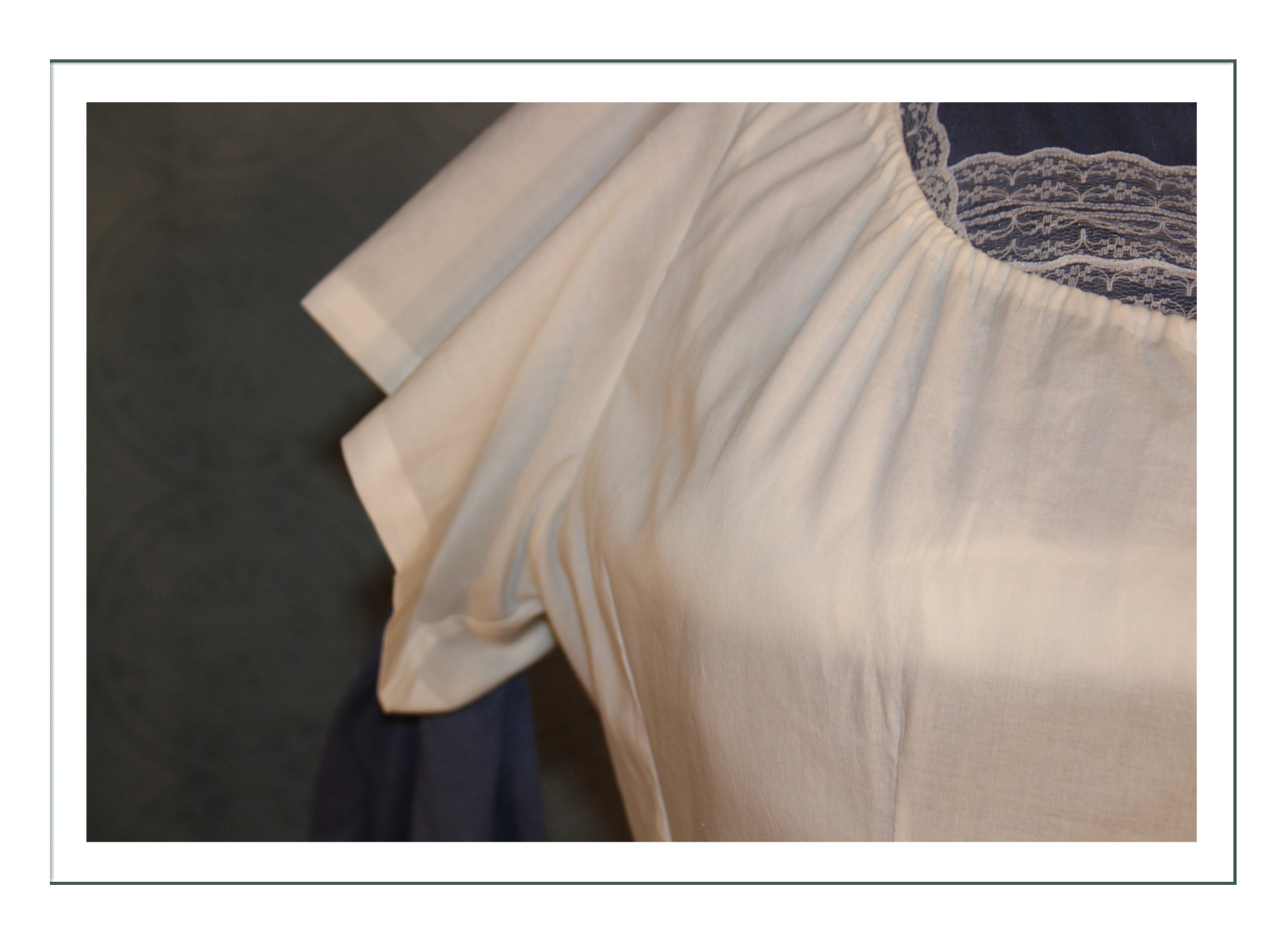
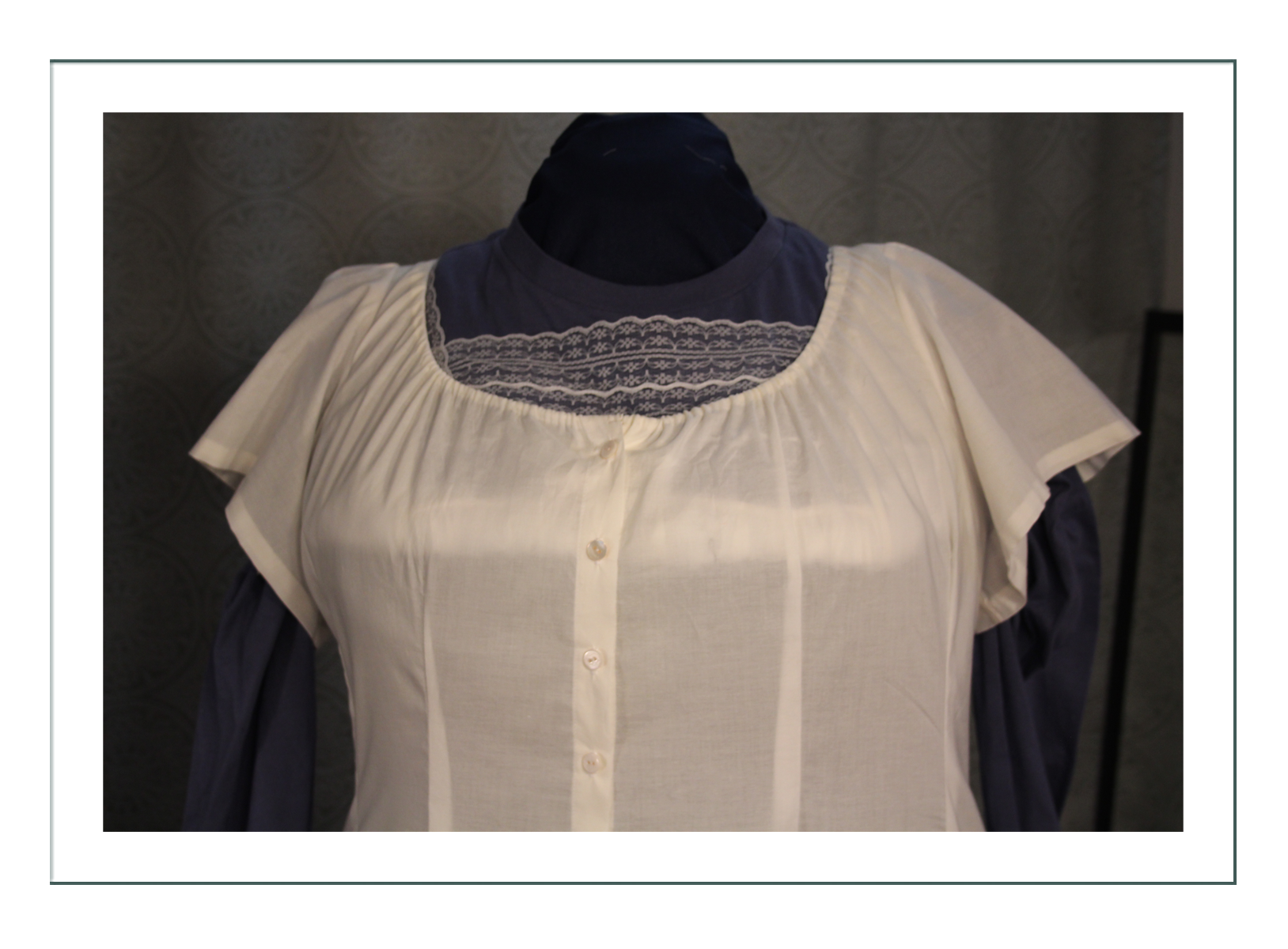
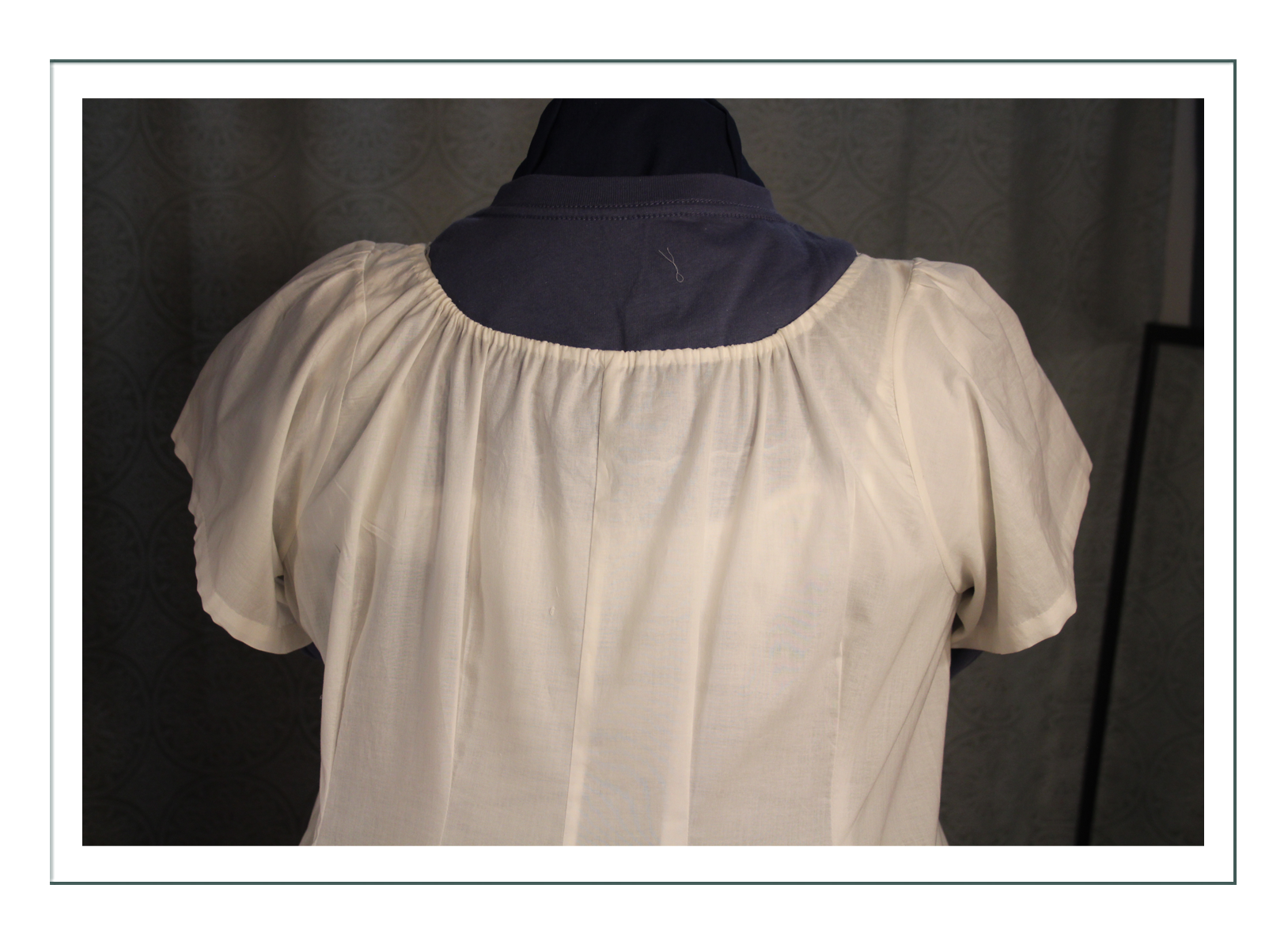
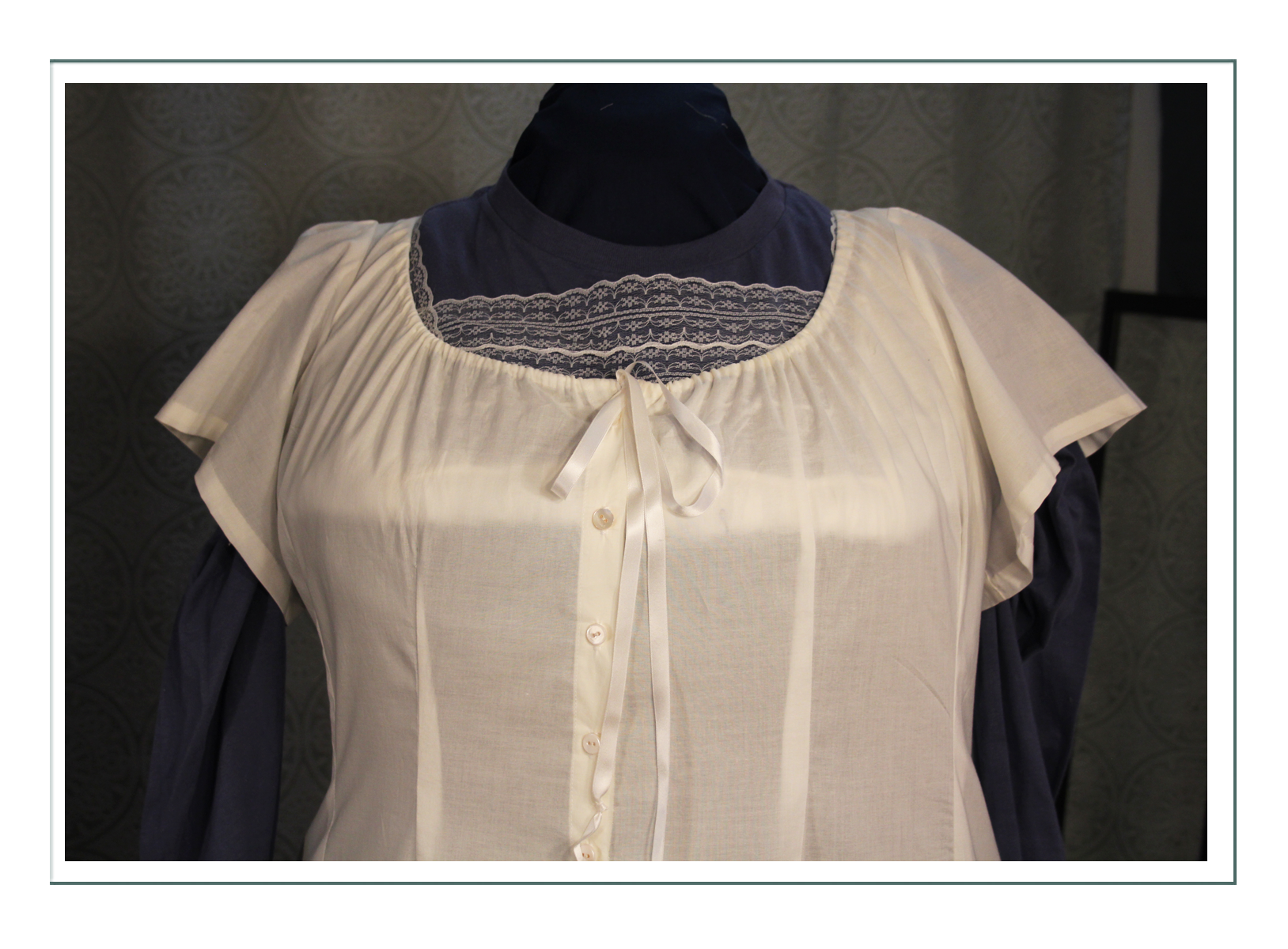
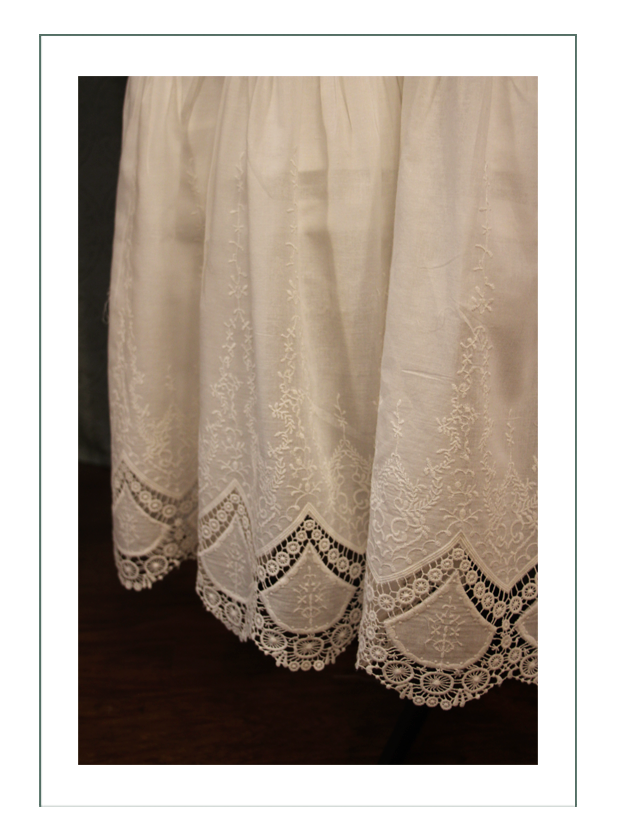
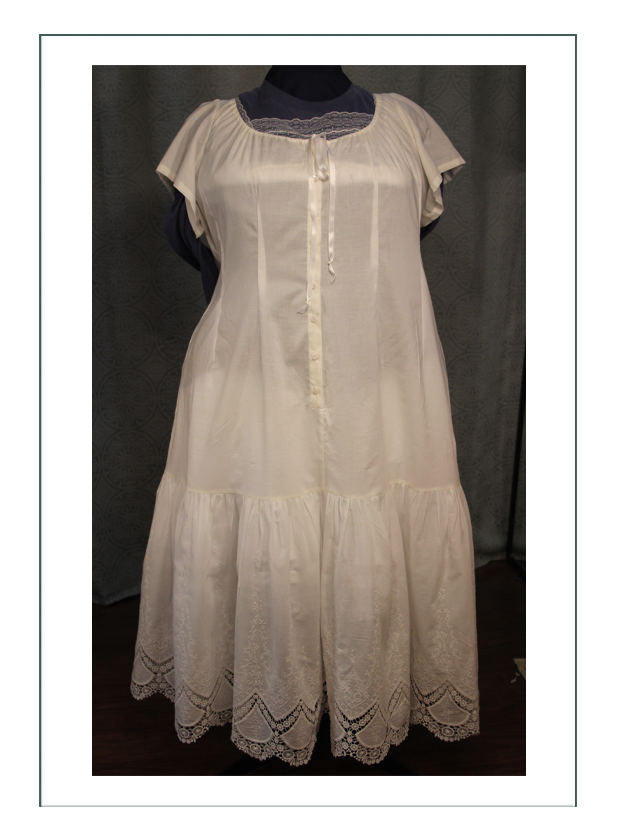
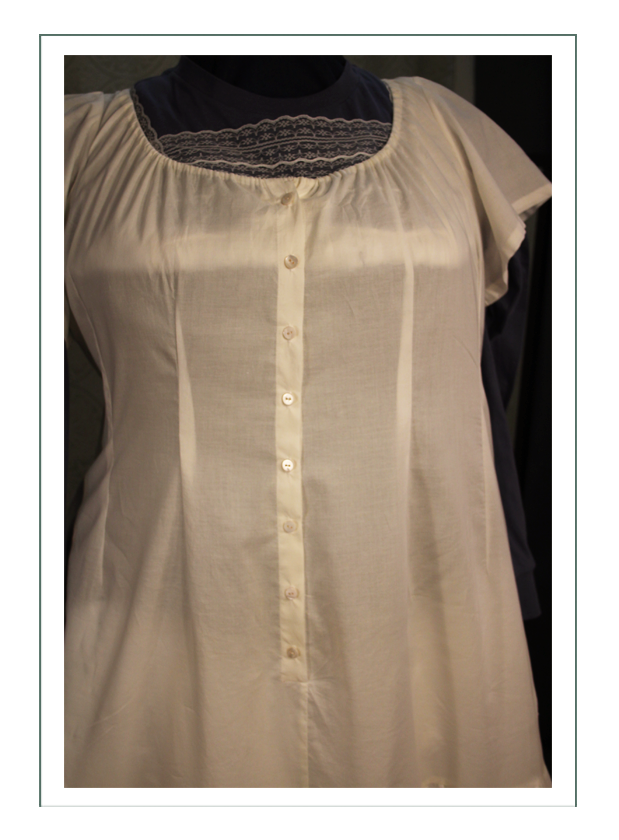
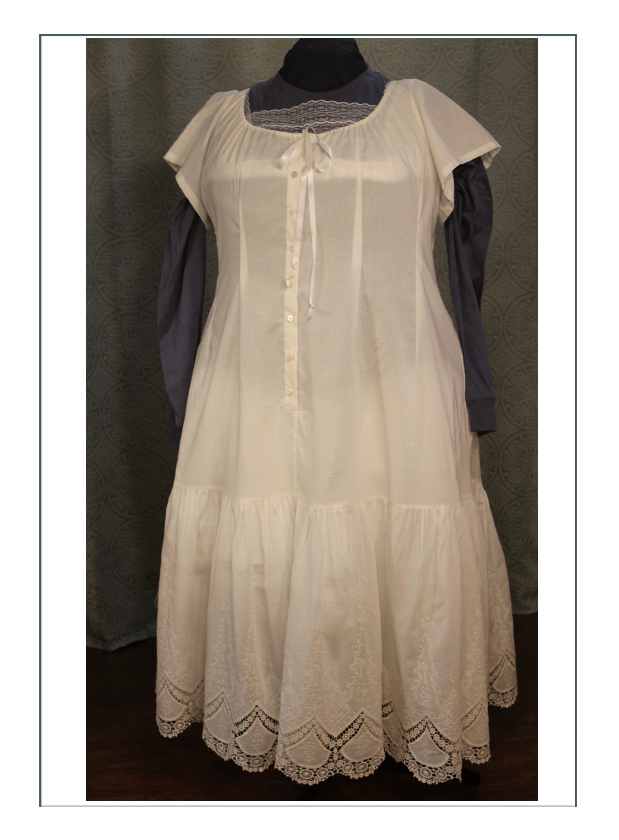
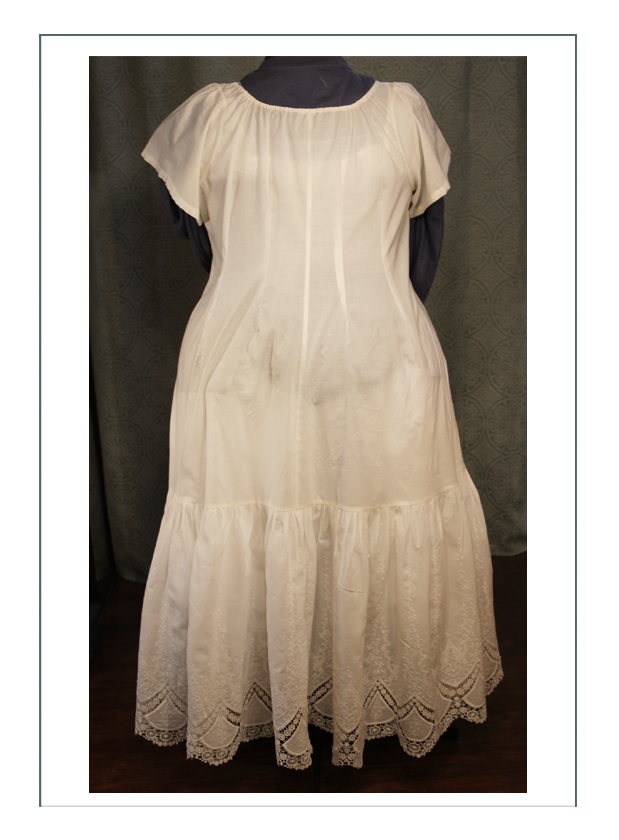
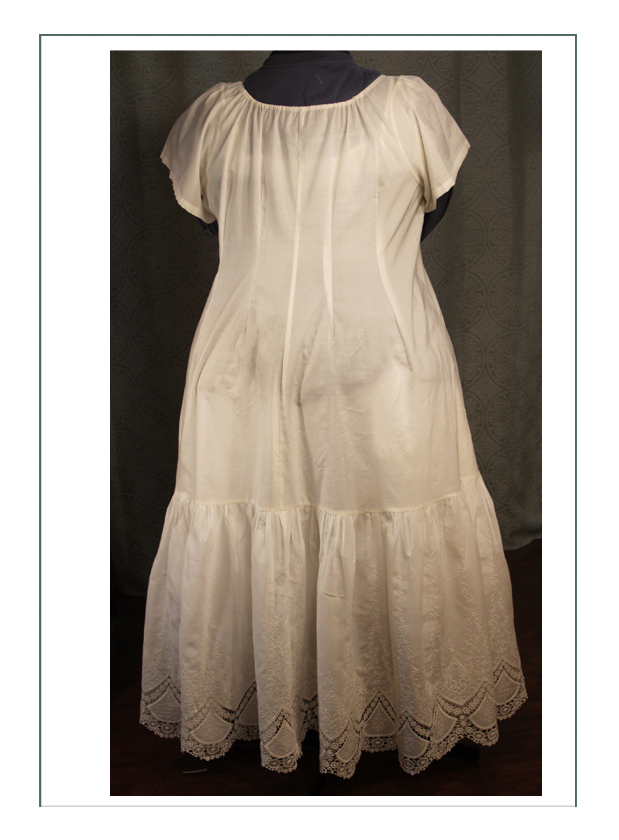
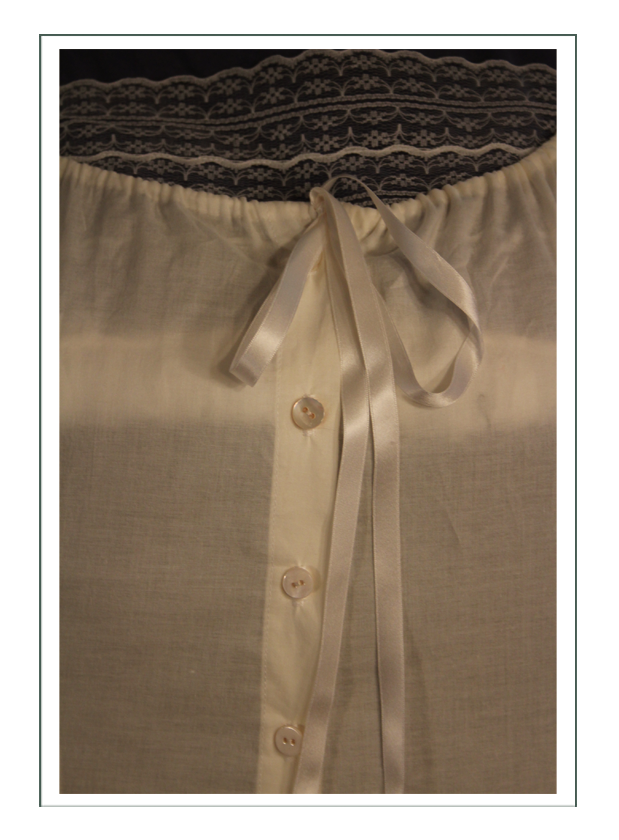
Corset with Pads
This was available and her size! It is black couteil fabric with cotton lining and cotton sateen rump and bust pads. We are so excited to get those voluptuous curves of the Edwardian era! It’s a perfect fit over the hips.
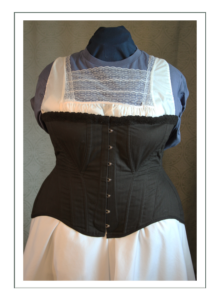
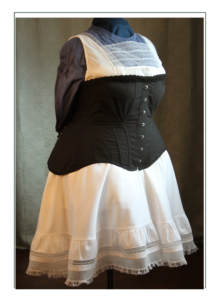
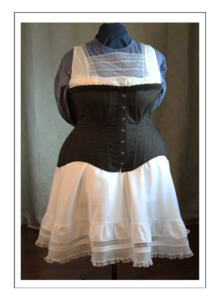
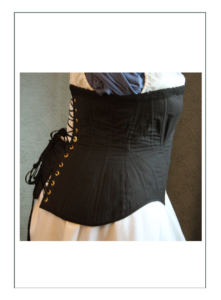
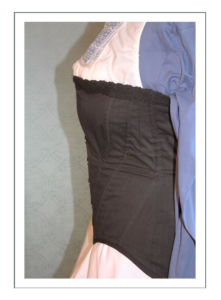
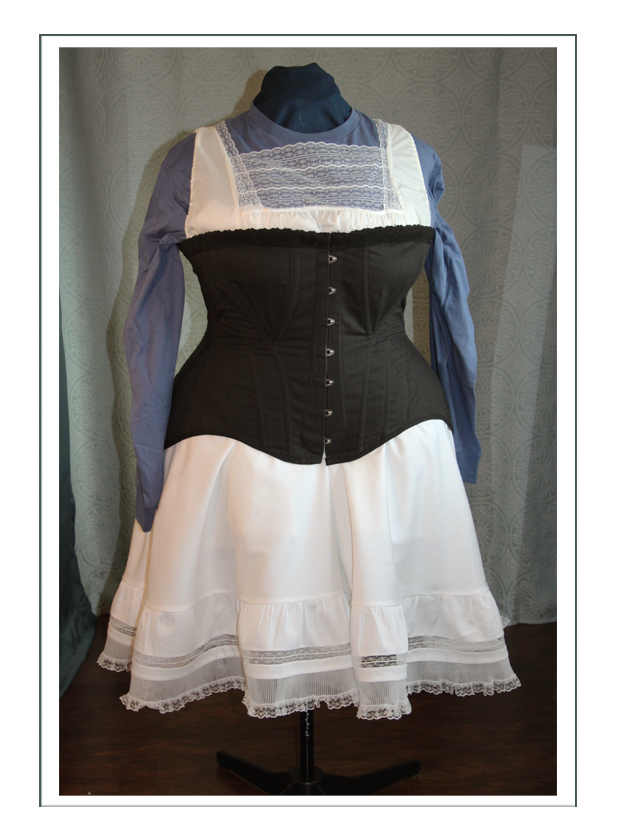
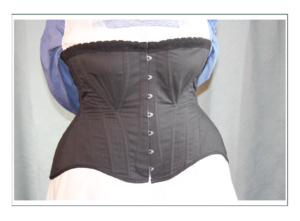
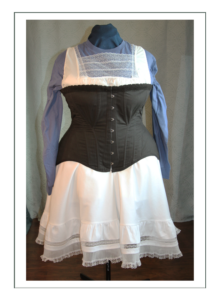
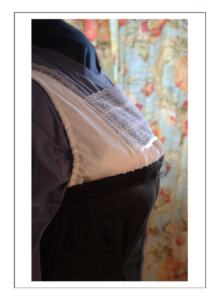
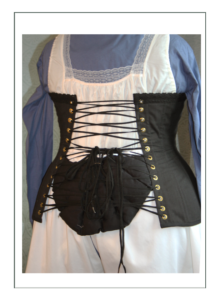
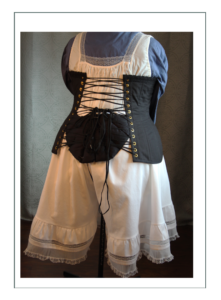
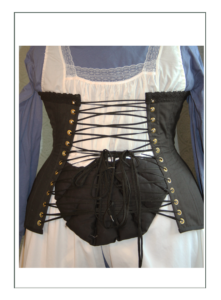
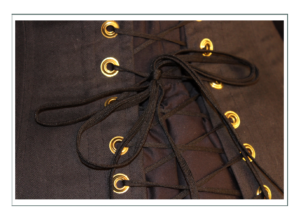
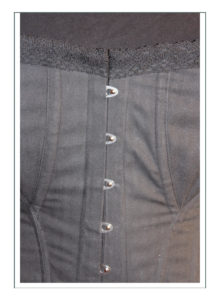
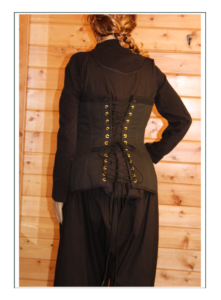
Dress
The challenge with the dress was finding the fabric that would hold the lines, be almost no-iron, and give the same appearance as the original design. We made the pattern entirely from our heads. There will be an inside cord similar to an 1870’s prairie bonnet, so the waist can be brought in or out – so the dress can be worn with the corset tightly cinched, cinched, or with no corset at all.
During construction, the stiffness and heaviness of the fabric became a challenge; to get the draping and the “pouf”. This design is completely our original, based on museum examples and photographs, so we took some liberty in the pleating and gathering. The original pleating design had the pleats hanging out over the shoulders, but in draping, that just made the ensemble look like it had wings. We still needed the movement and stretch through the center back and center fronts (so a nurse can bend and lift), so we just reversed the pleating and left it to be completely mobile.
The back waist elastic casing was a bit bulky because of the interfacing, but that will ease up with use over time. Overall, we were really pleased to see that silhouette pop out with the flat front, full back, pouch, wide shoulders, and lovely detail from the bias trim and use of direction of stripes to show off the gores and add interest.
It should also be easy to put on or off by herself, and be very durable and washable, with the venting and ease needed to actually work in it.

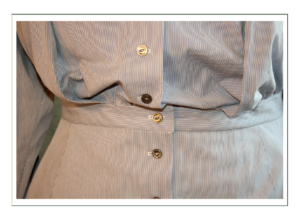
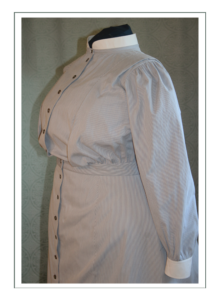
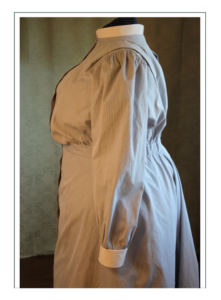
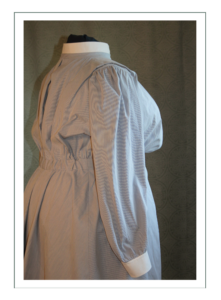
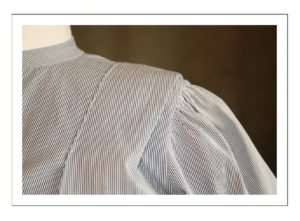
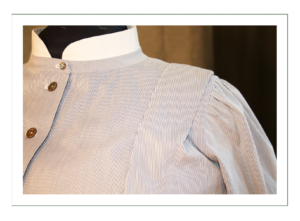
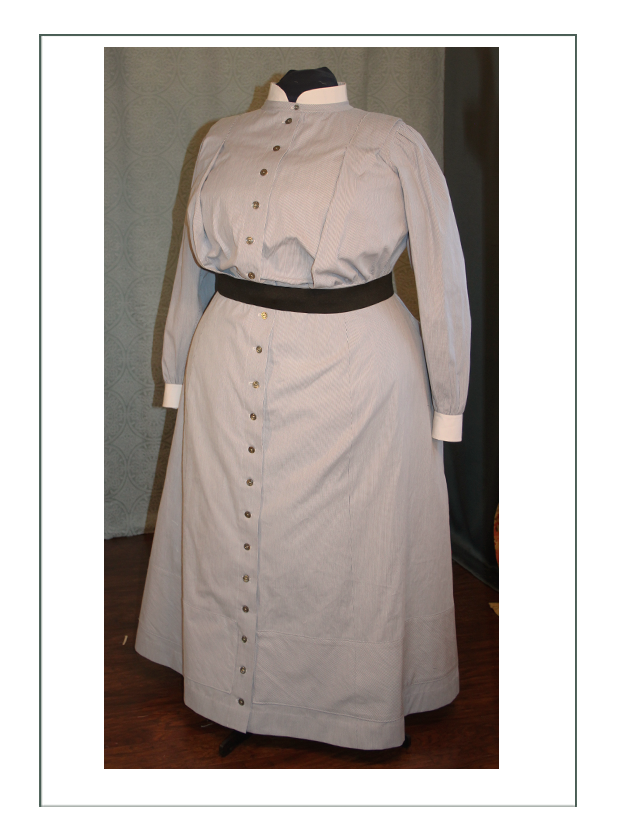
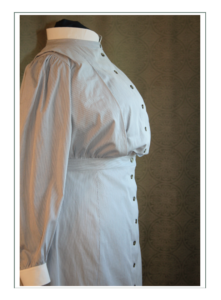
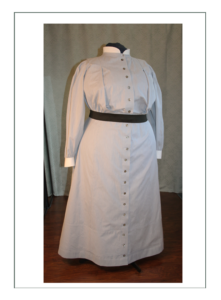
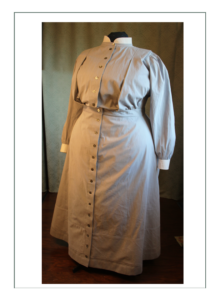
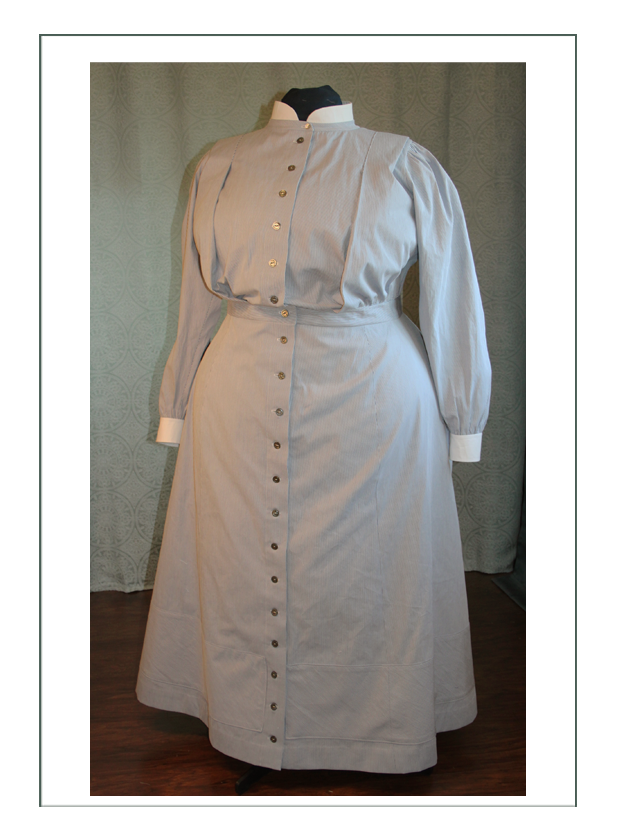
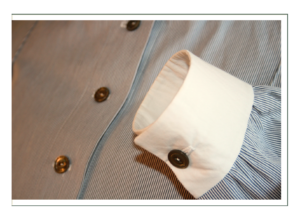
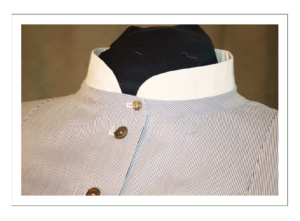
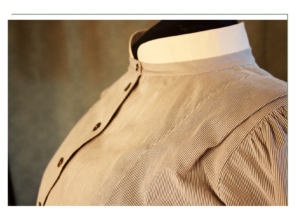
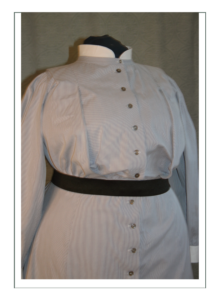
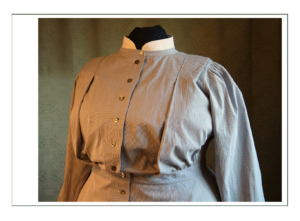
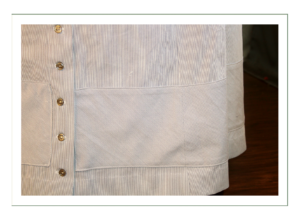
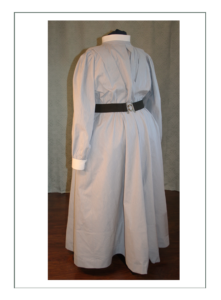
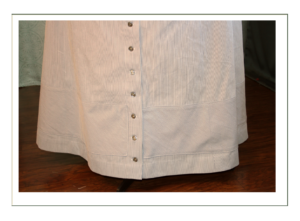
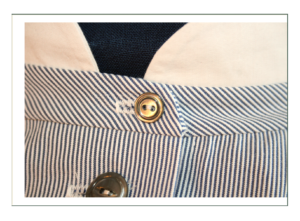
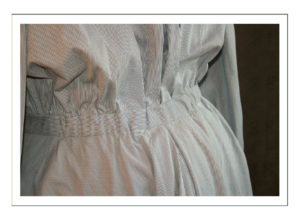
Apron
White premium 100% cotton starched within “an inch of its life” is the apron, also a completely “from scratch” (out of our heads) design to match extant examples. Because of the need for this to fit a 4″ waist size difference between “in corset” and “out of corset”, we put a whole lot of buttons to hold the straps and the back waist. It makes it a bit busy, but the belt covers up the necessary modifications.
The back still crosses over, and there is enough fullness to duplicate the pouch in the center front. An important thing to note about aprons from this era, is that they fully covered the dress in the bib and the skirt. This one goes around the back and almost fully covers the bodice, so in real life, and wearing it on the real job, it should spare the dress some washing.
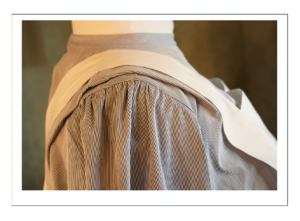
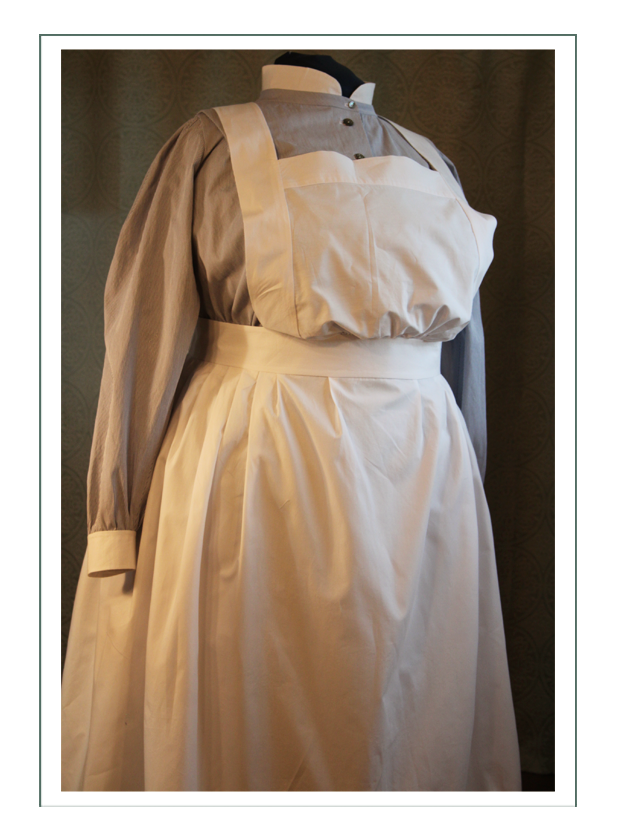
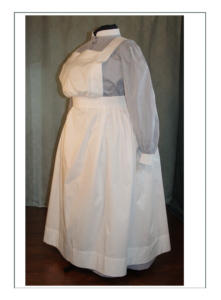
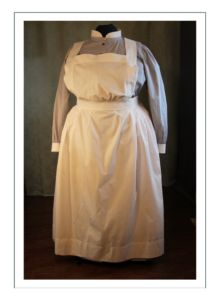
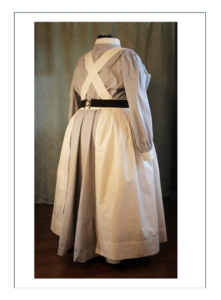
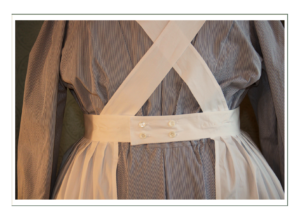
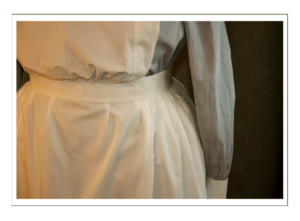
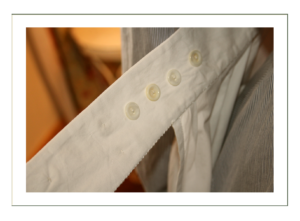
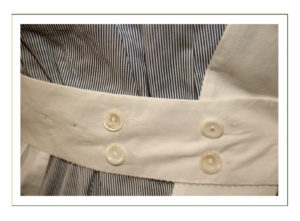
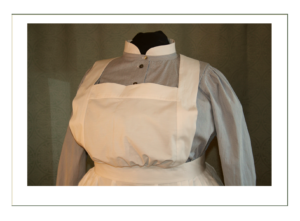
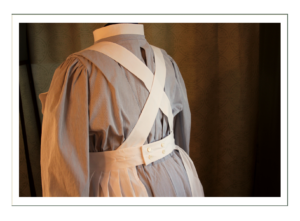

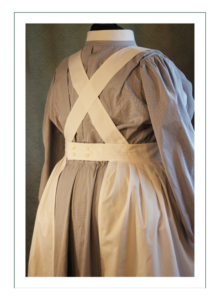
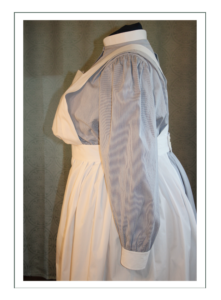
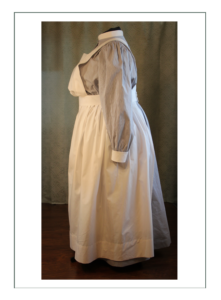
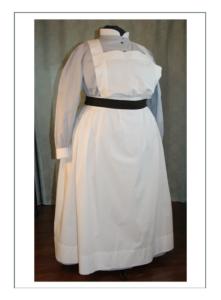
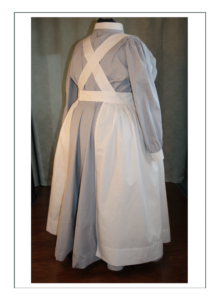
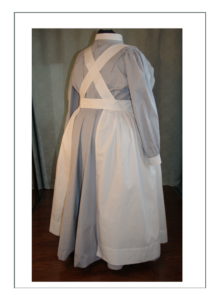
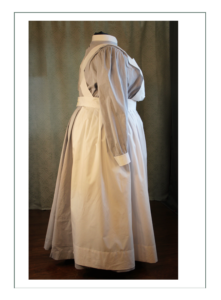
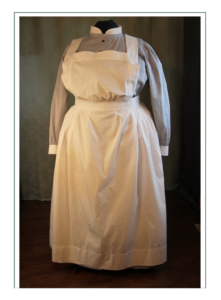
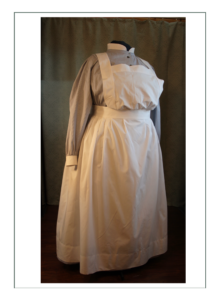
Belt
The belt holds the weight of the chatelaine with tools and hook instead of putting things in a pocket, which nurses did later. This meant the elastic had to have just the right tension to adjust not only for the weight of all that, but also to accommodate both sizes which will vary by as much as 4″ whether Jennifer wears her corset or not. Keep your fingers crossed. This features a brass “C” clamp which is so simple to use and gives it a nice, clean and sanitary look.
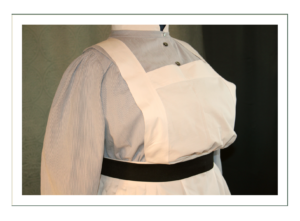
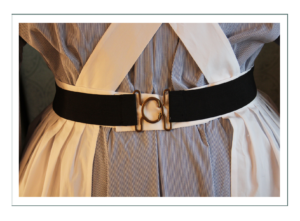

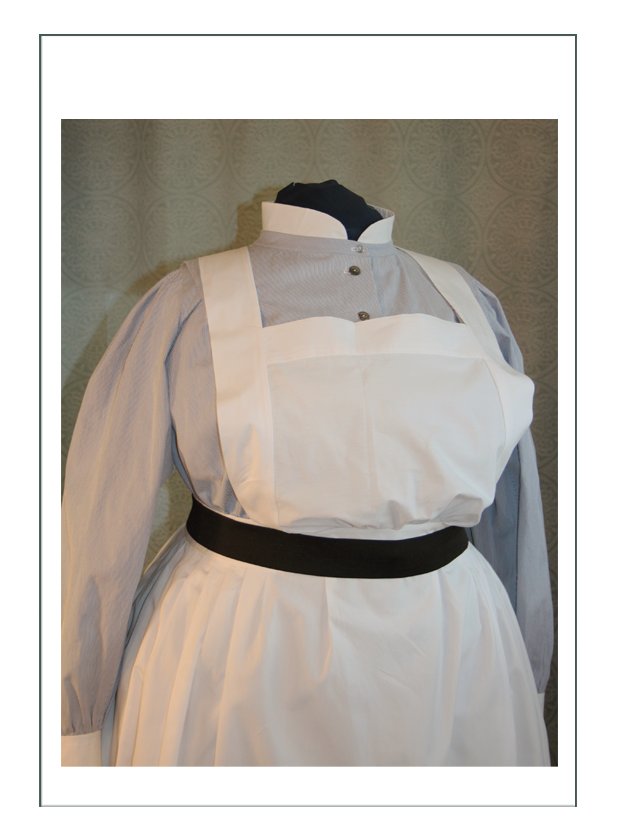
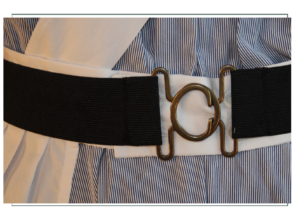
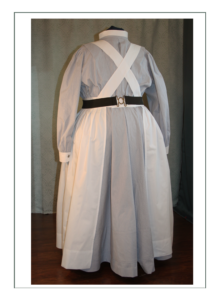
Cap
The same cotton as the apron, this is an original design. Since we sent the chatelaine, cap, tools, and belt hook on to Jennifer, we don’t have them to photograph here with the rest of the ensemble.
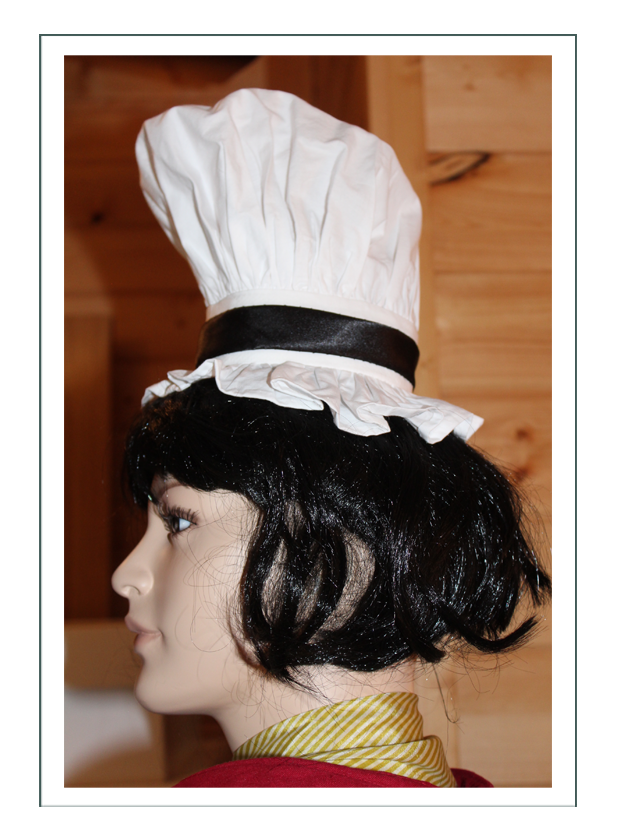
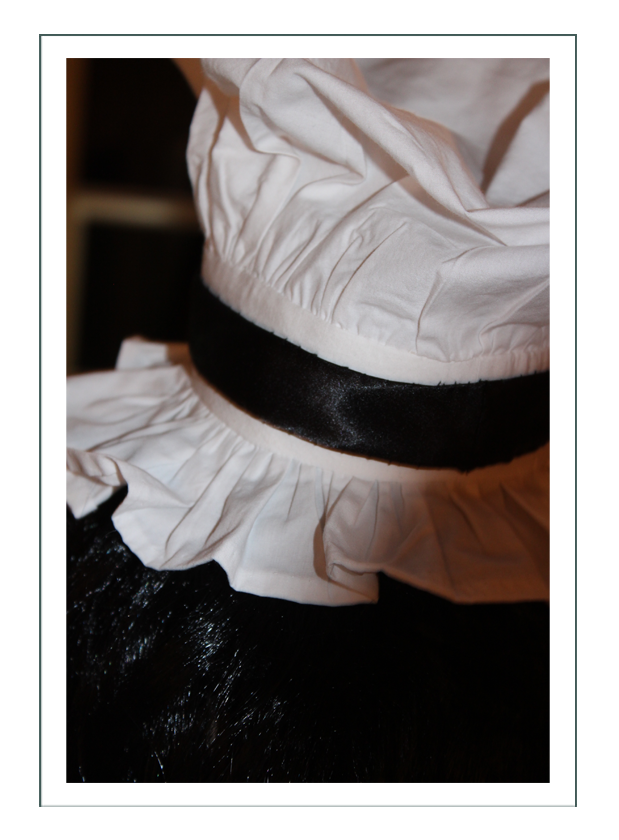
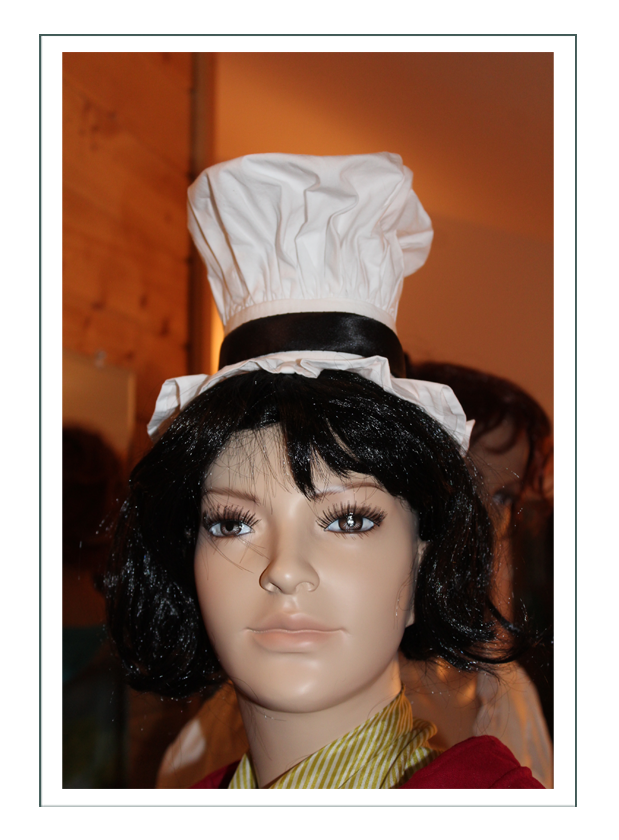
Chatelaine, Tools, Locket Watch
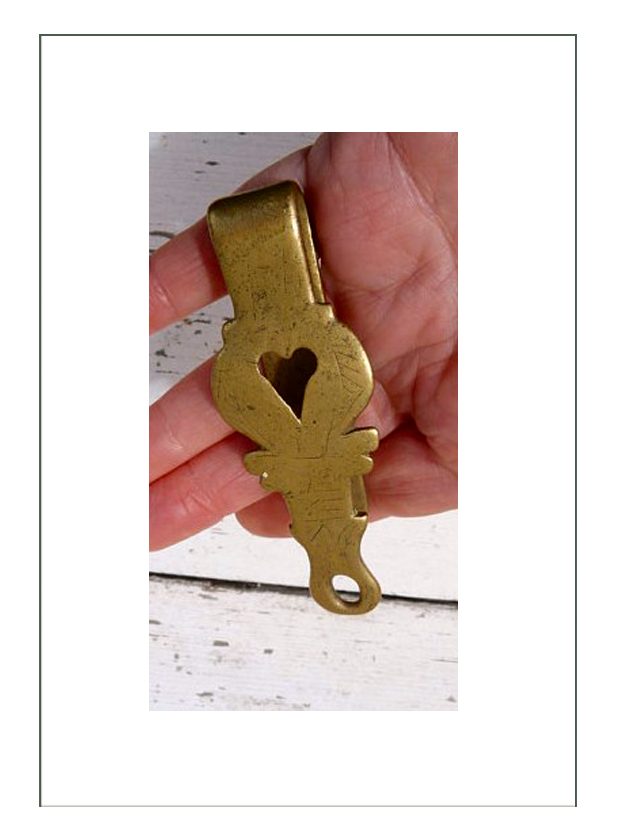
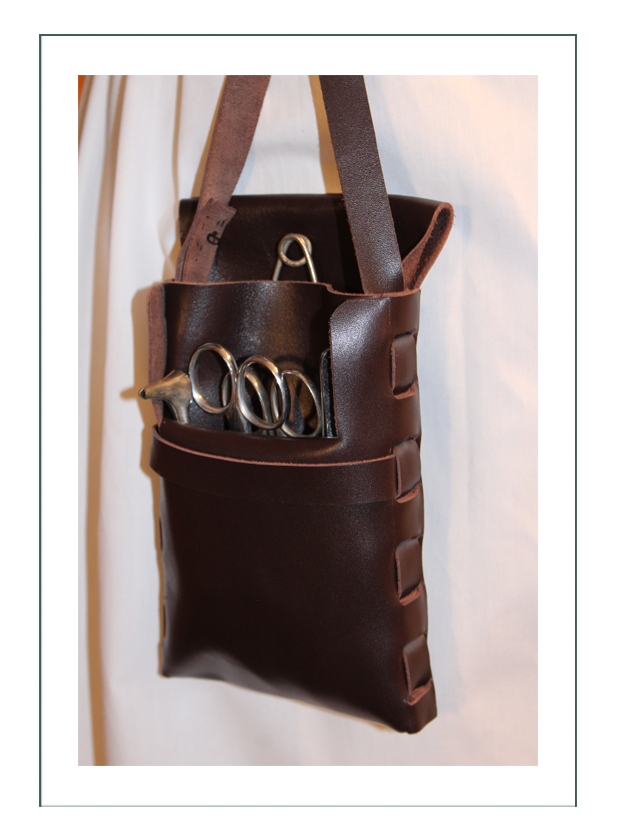
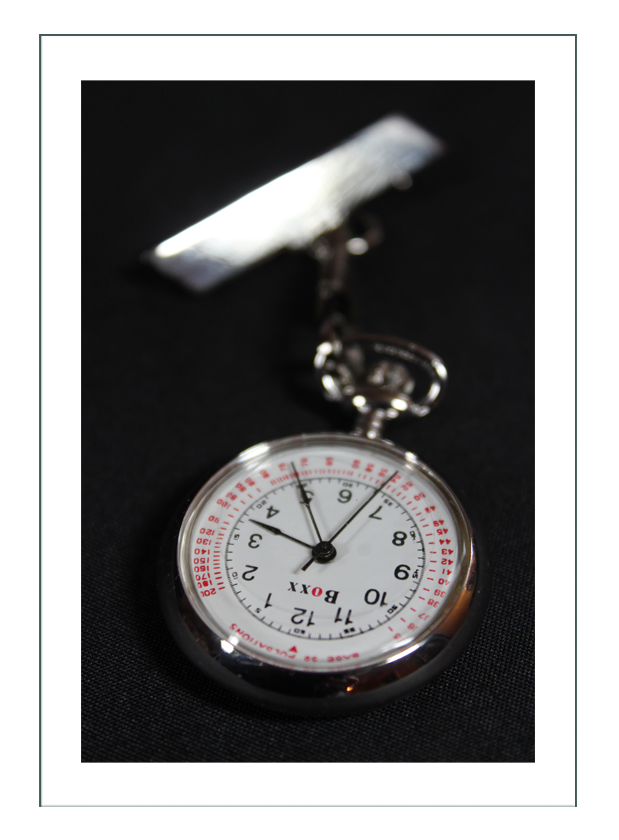
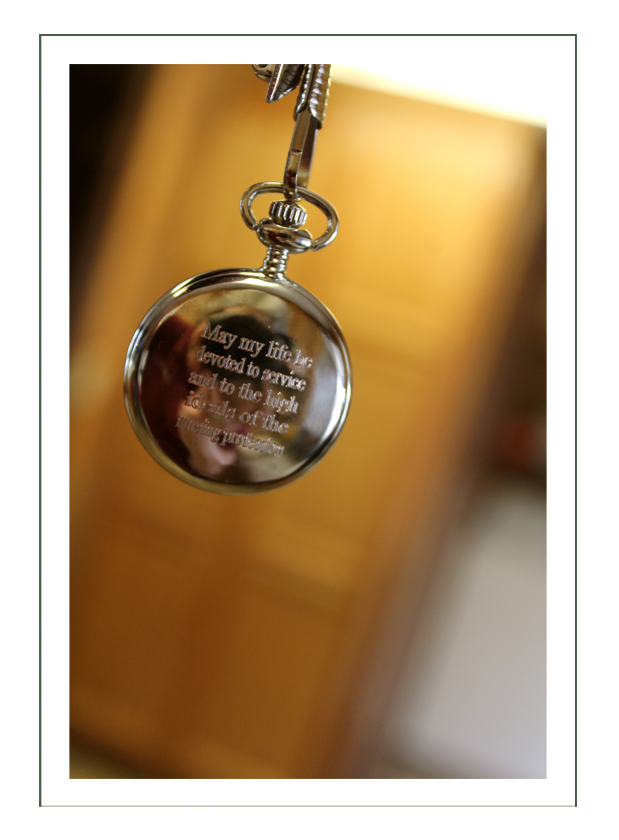
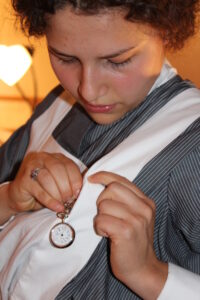

A quick note: Jennifer will have fittings and instructions on how to dress and for care and use of each piece above. Since these are all comfortable and breathable fabrics and notions, they should be durable and easy to wear daily. The main difference is – she’s going to have to THINK like a 1910 nurse.
That means at the end of the day she’ll need to wash her under layers chemise, stockings and drawers, but never the dress or corset and only sometimes the slip. (In reality, a nurse would have a couple undergarments she would switch out and wash on her day off). She’ll need to keep her cap and apron ironed and starched. In other words, she also has to ACT like a 1910 nurse even when she’s not wearing it.
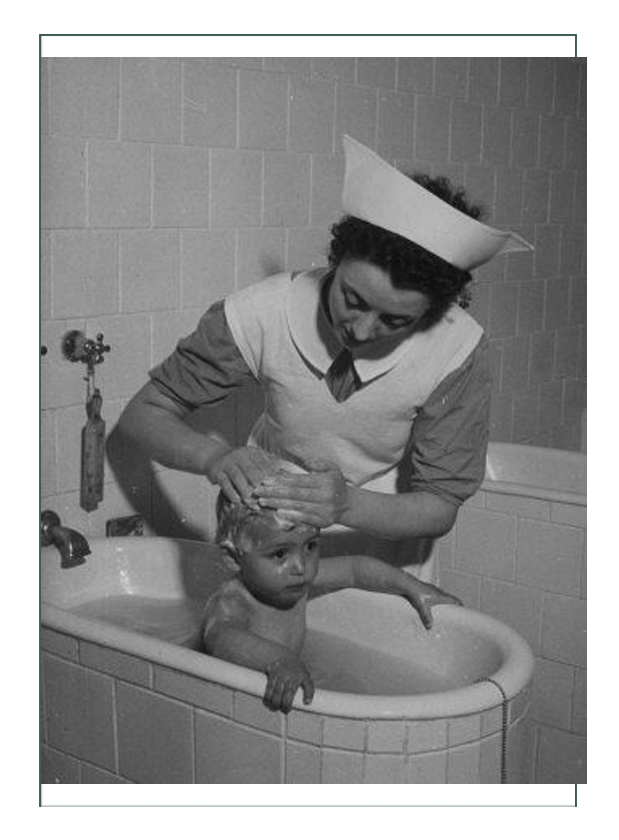

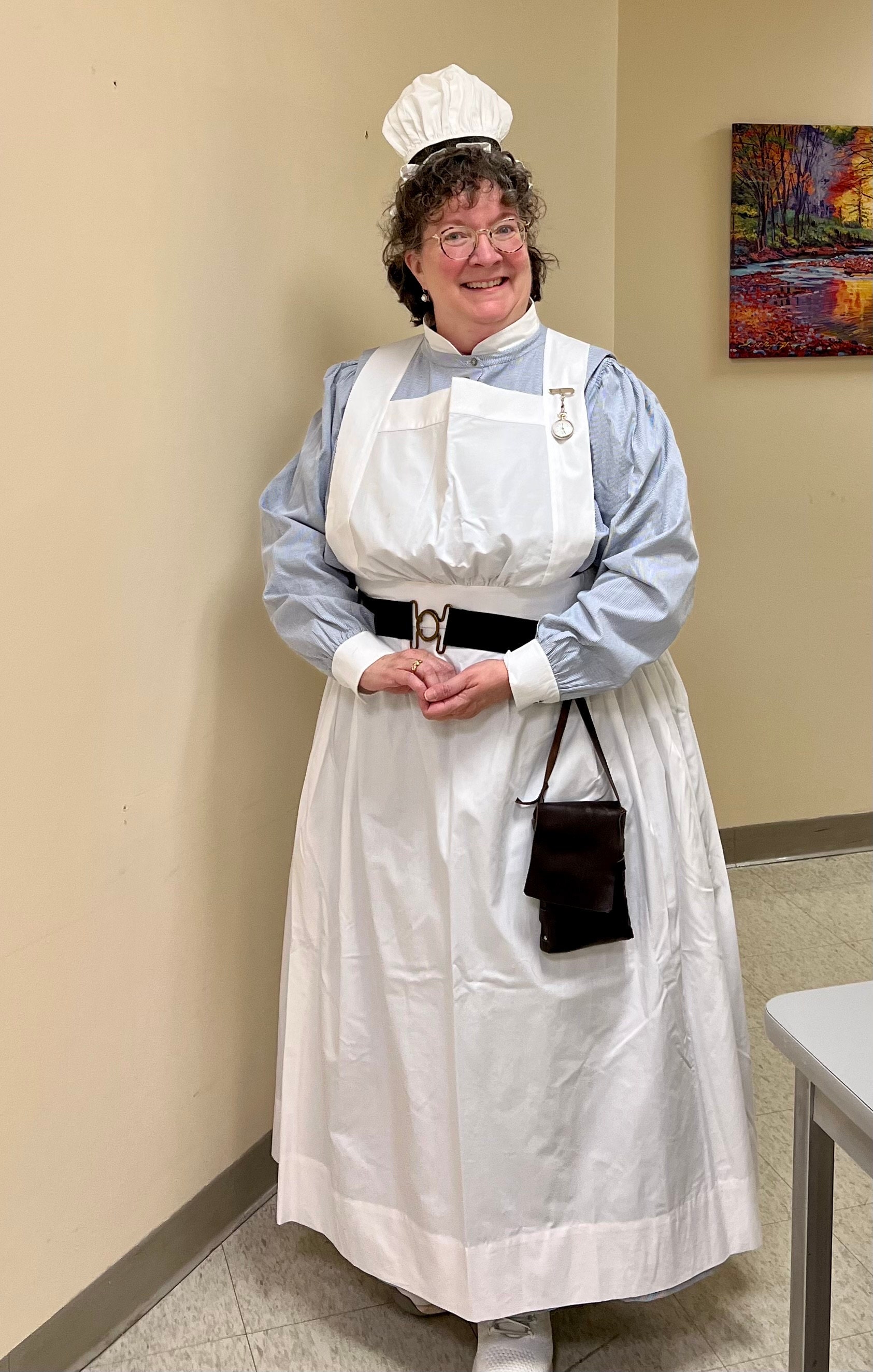
Click here to go to Jennifer’s Historical Context Page (next)
Click here to go to Jennifer’s History of Nursing Fashion Page
